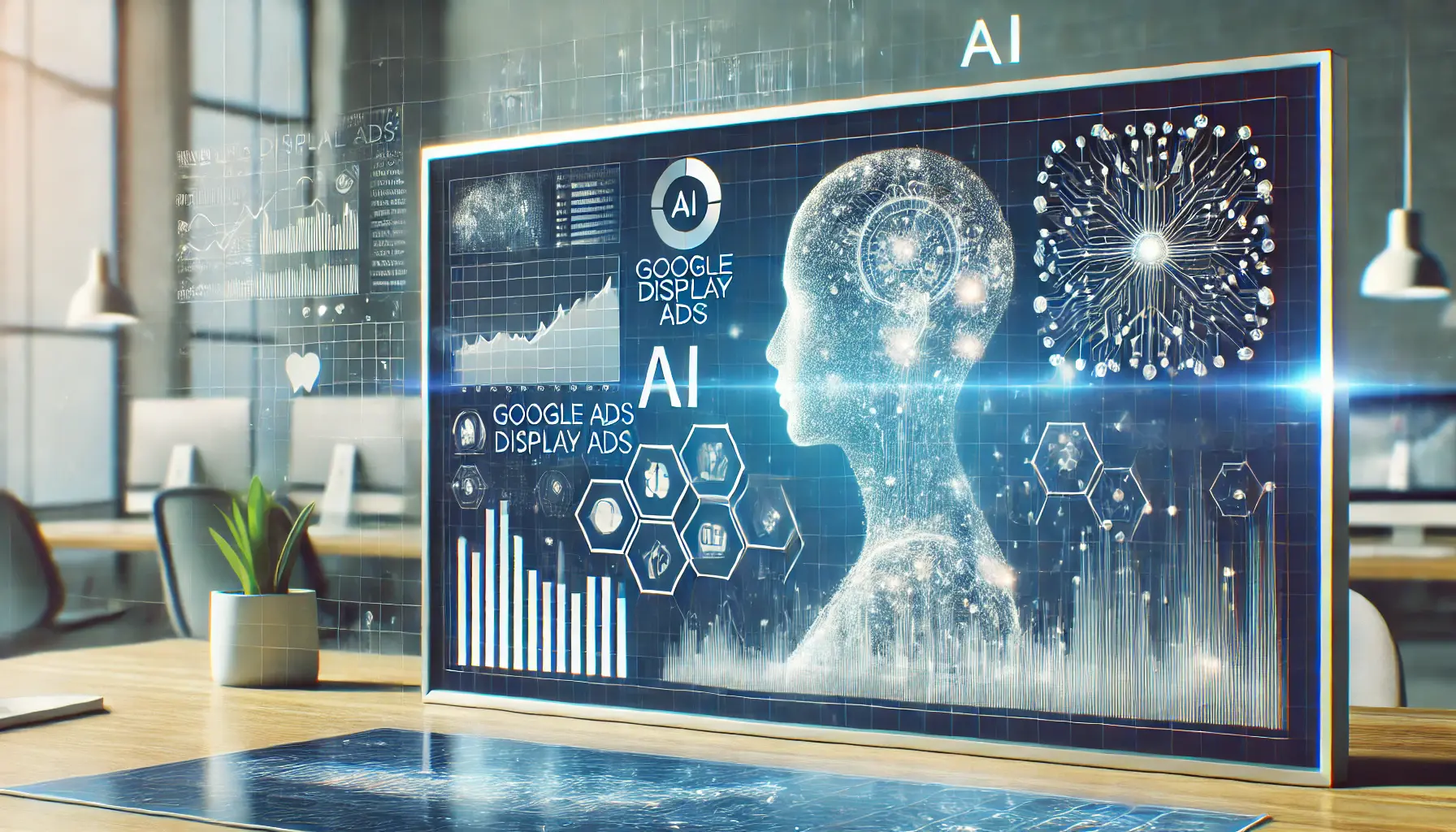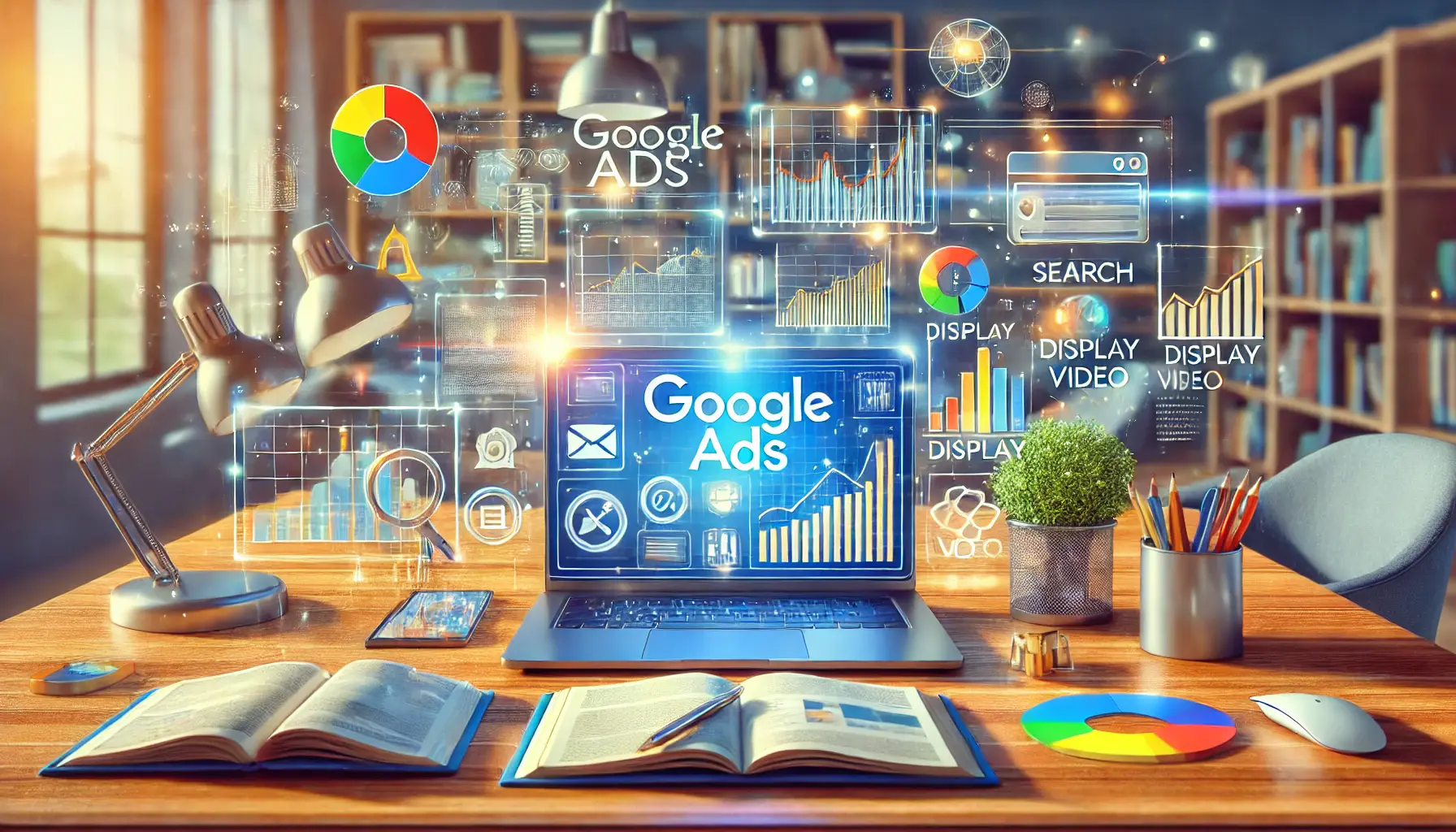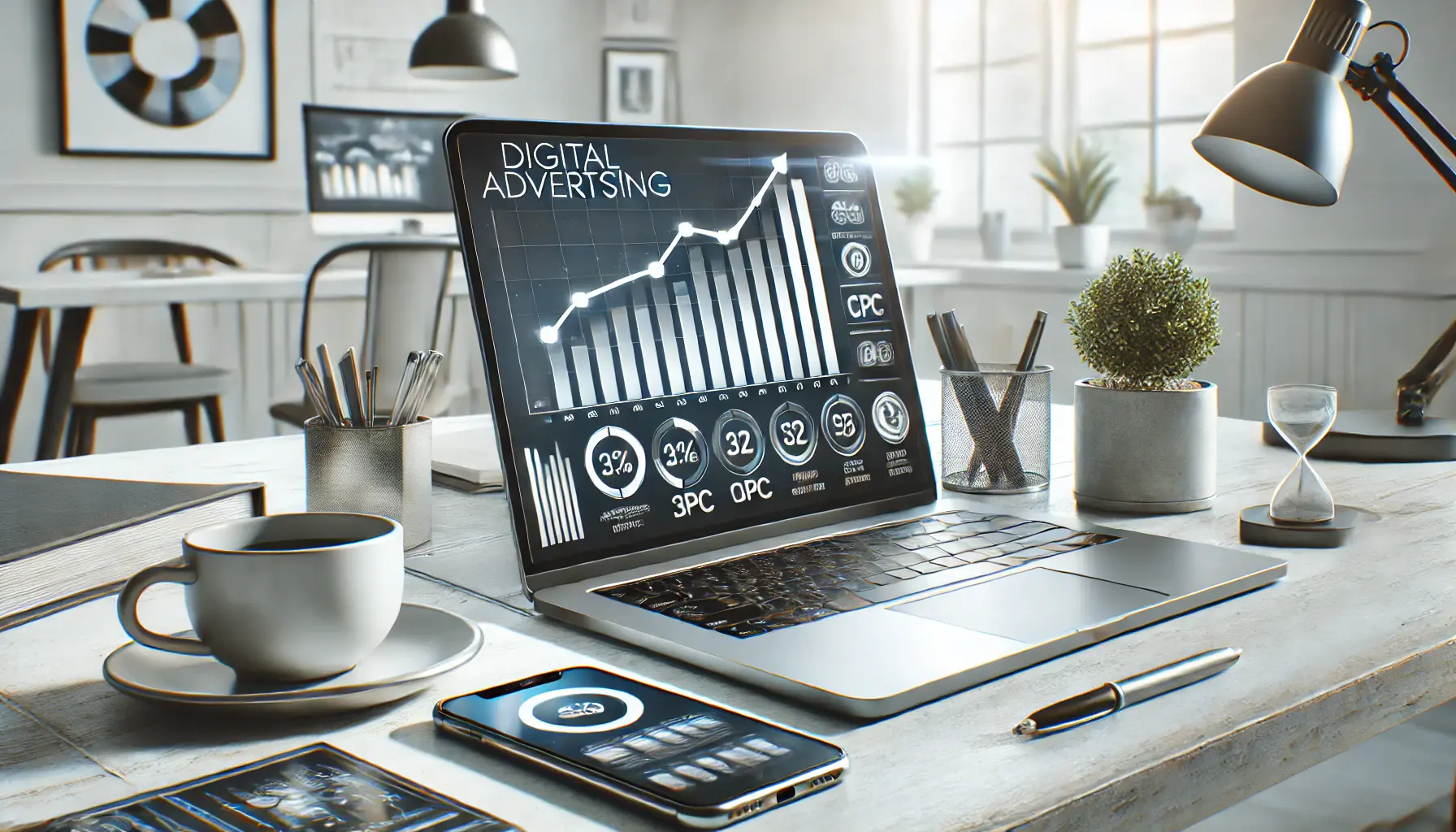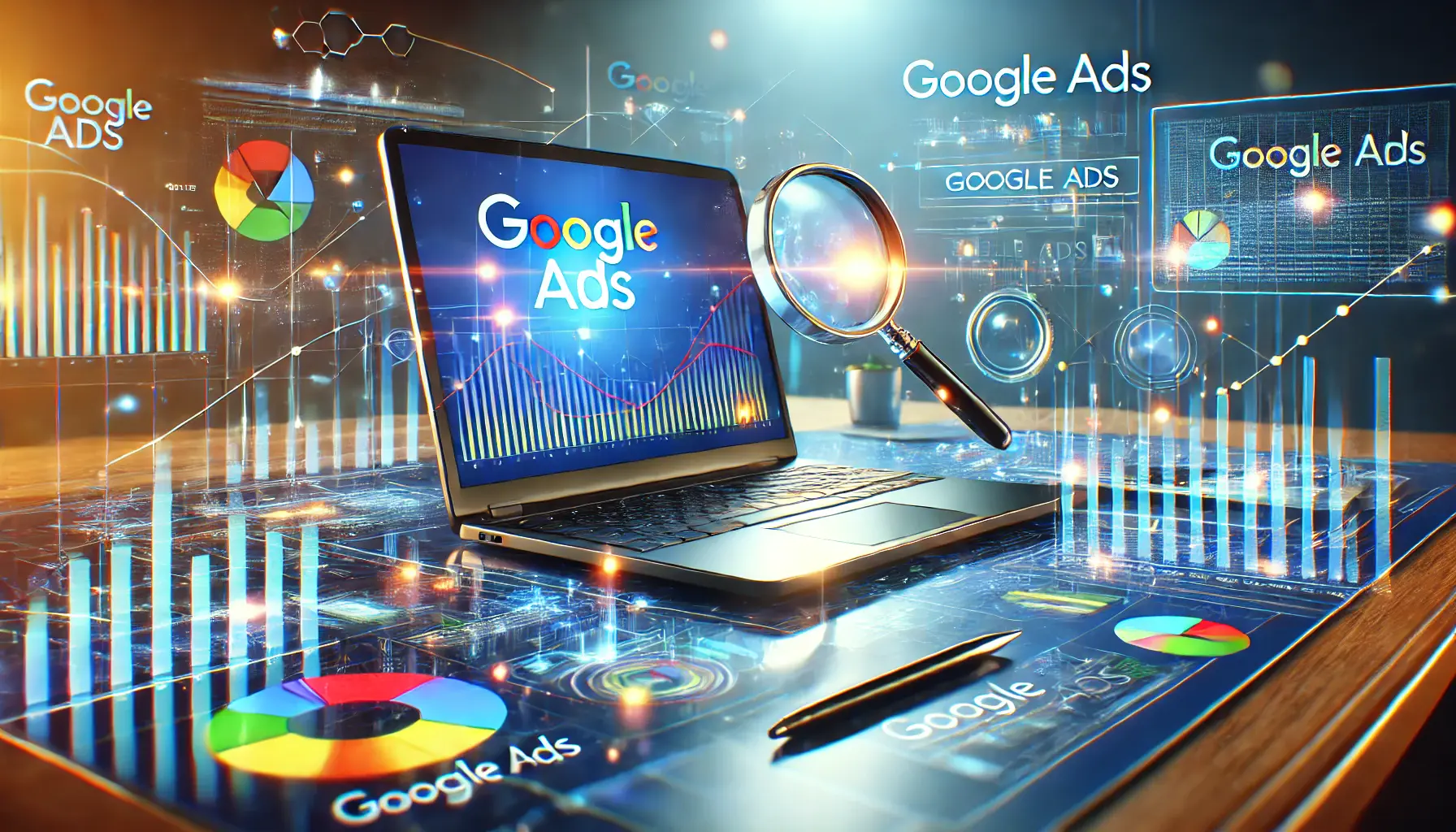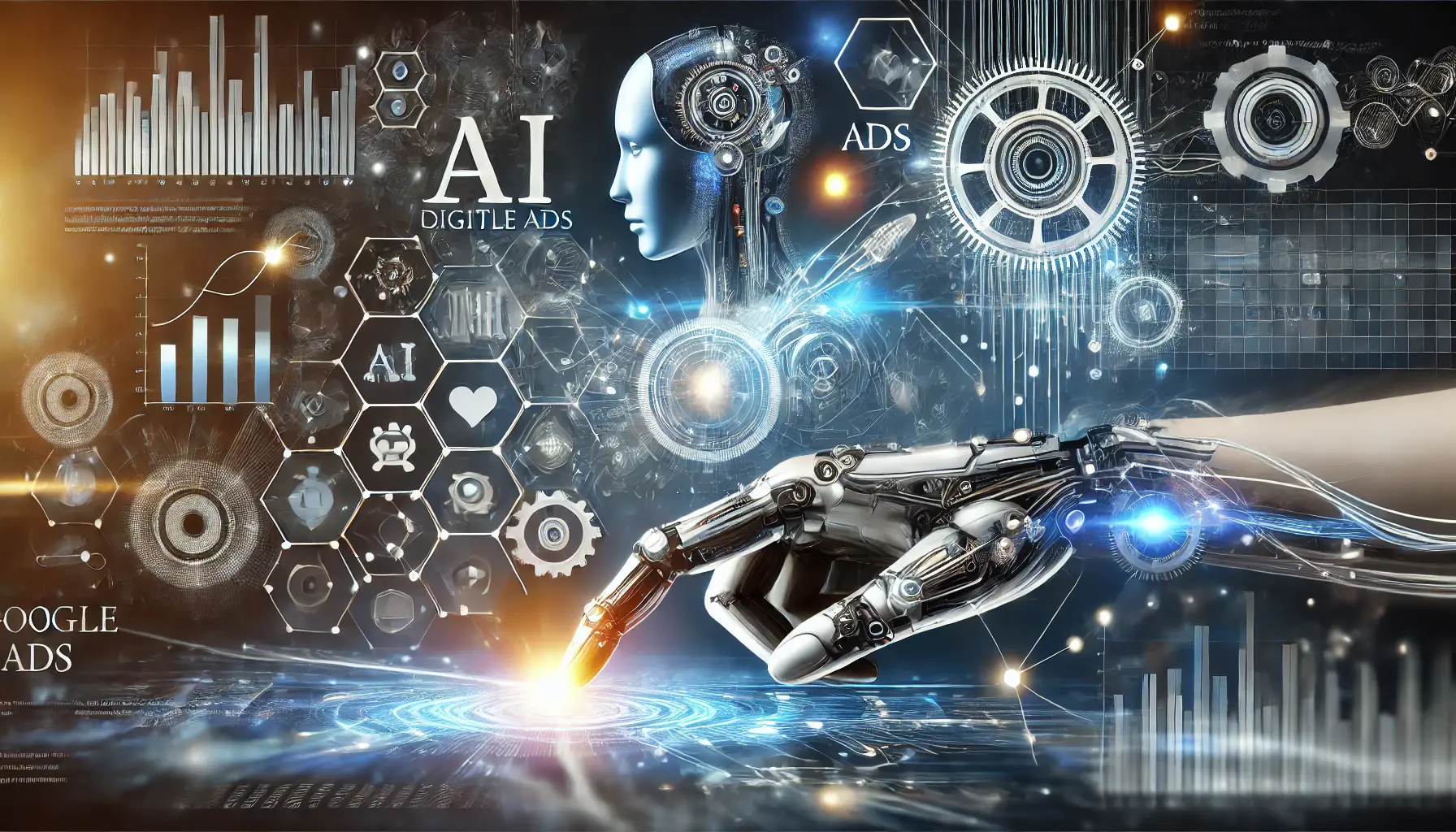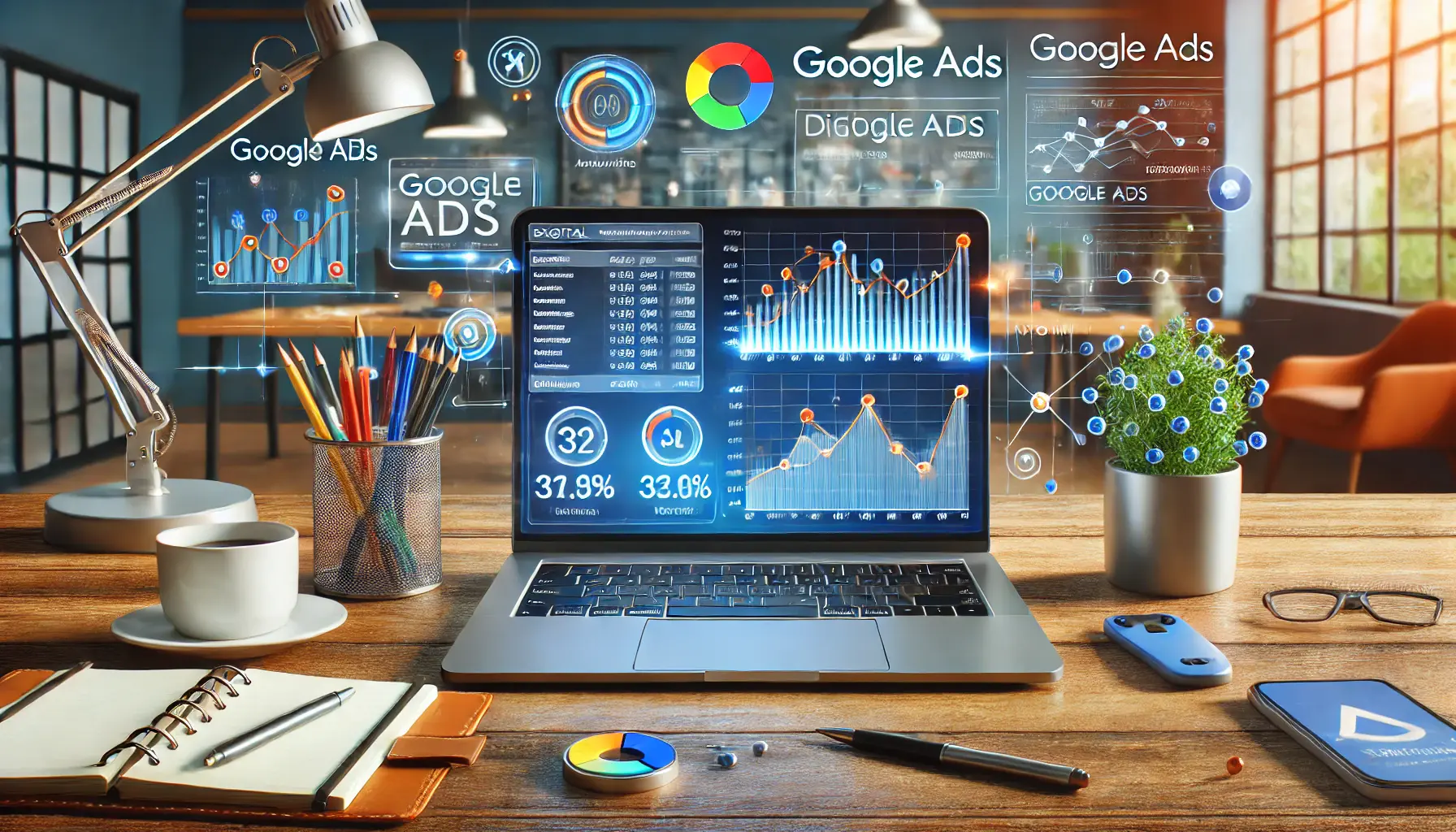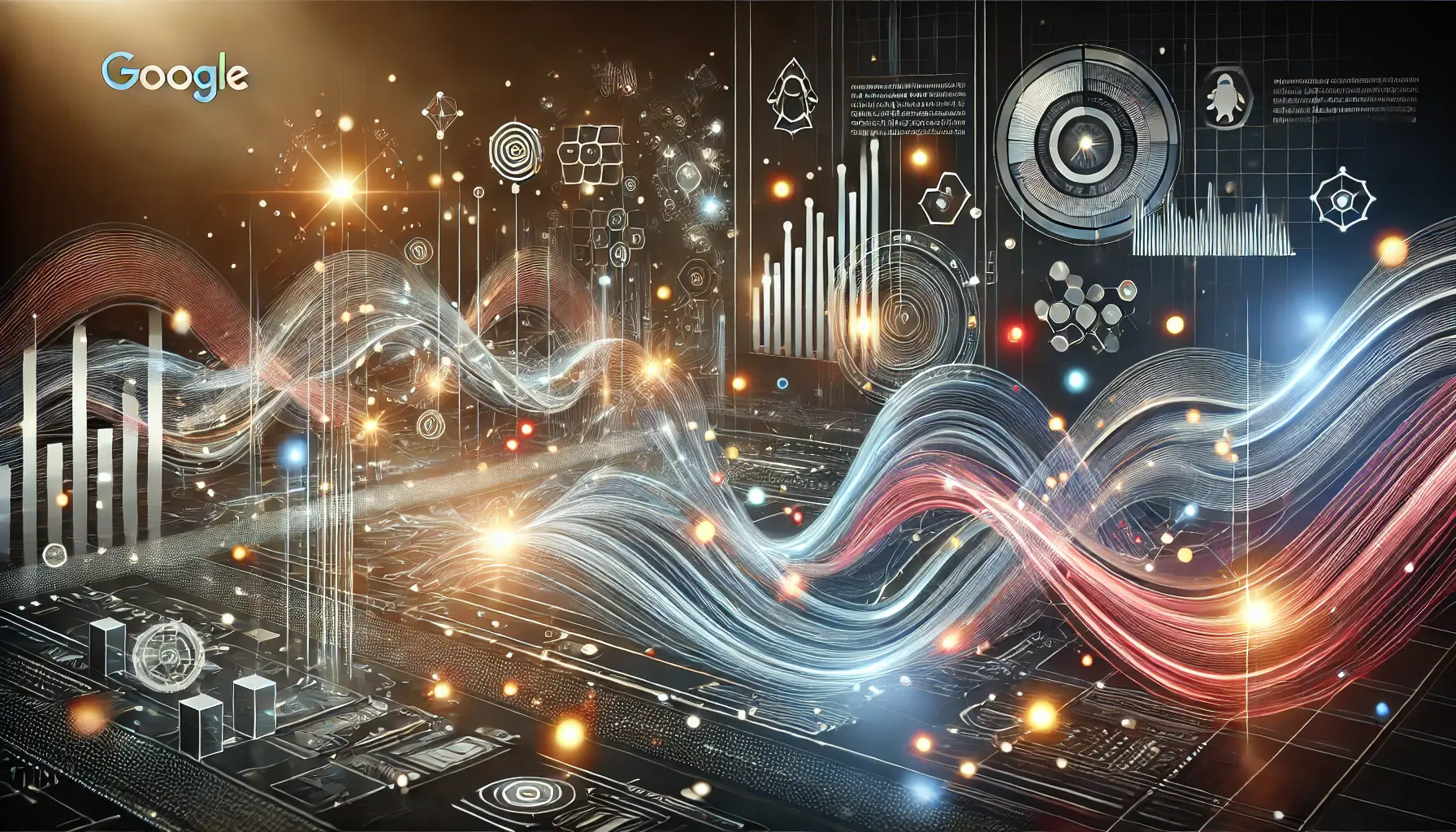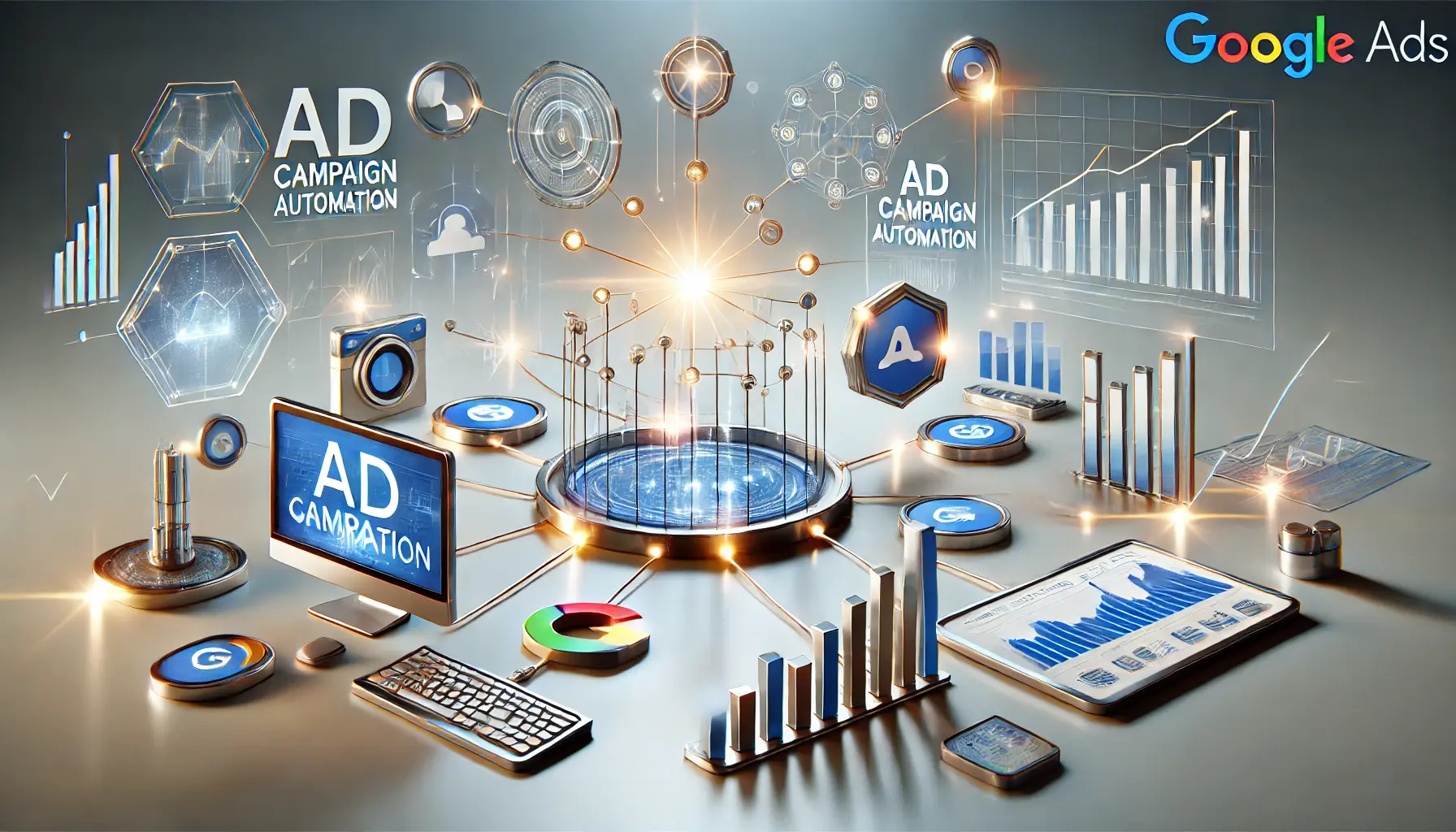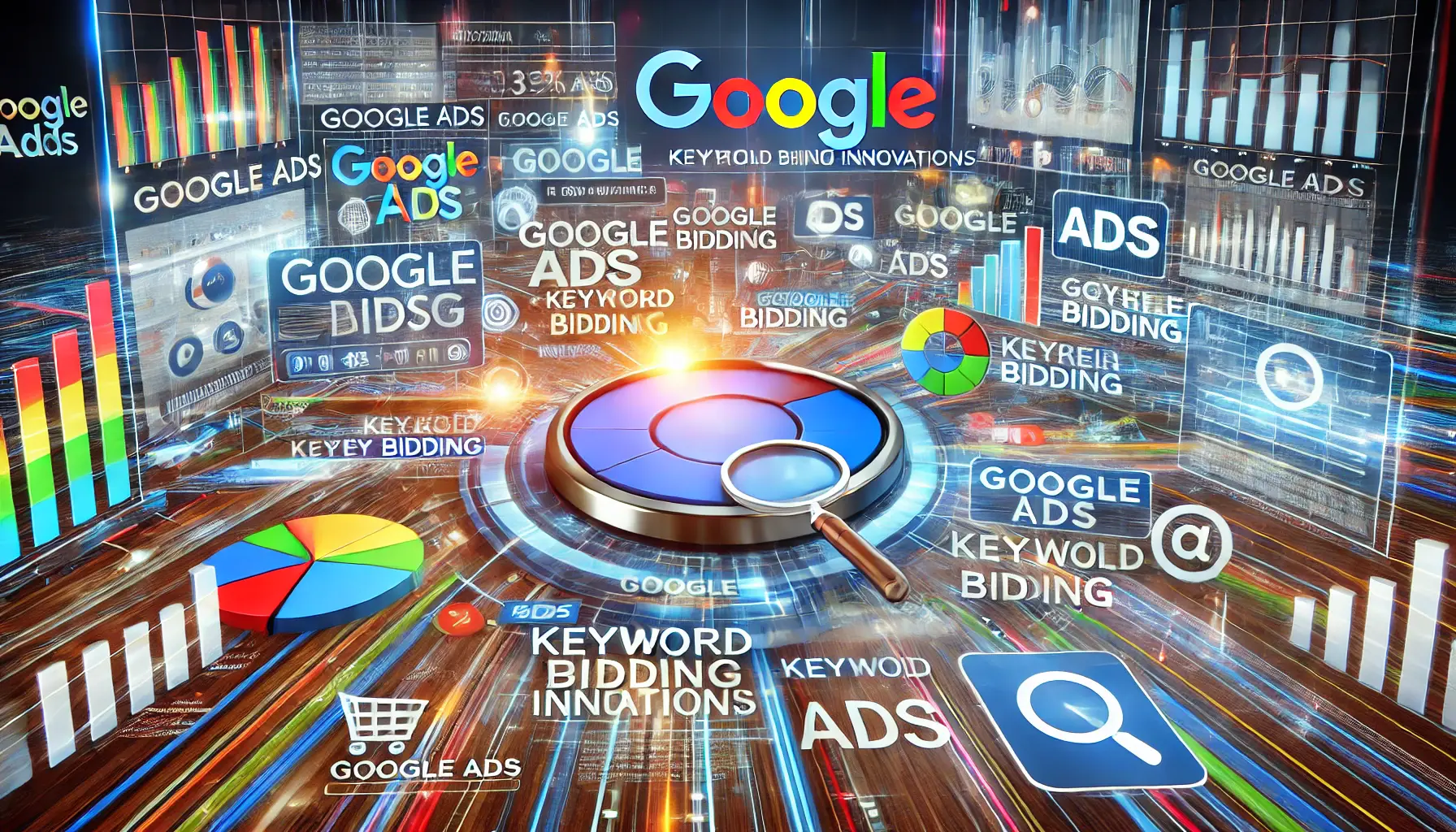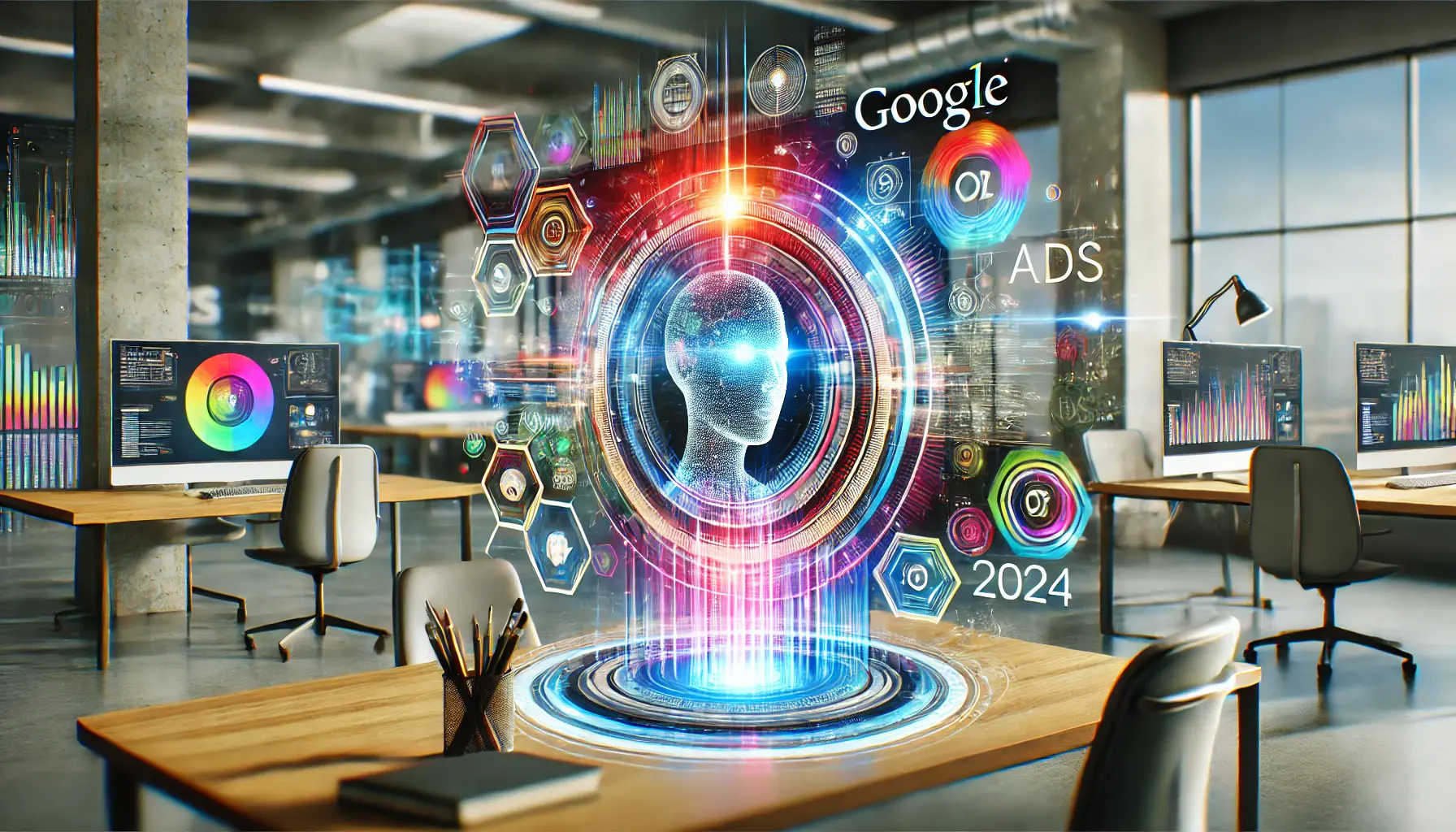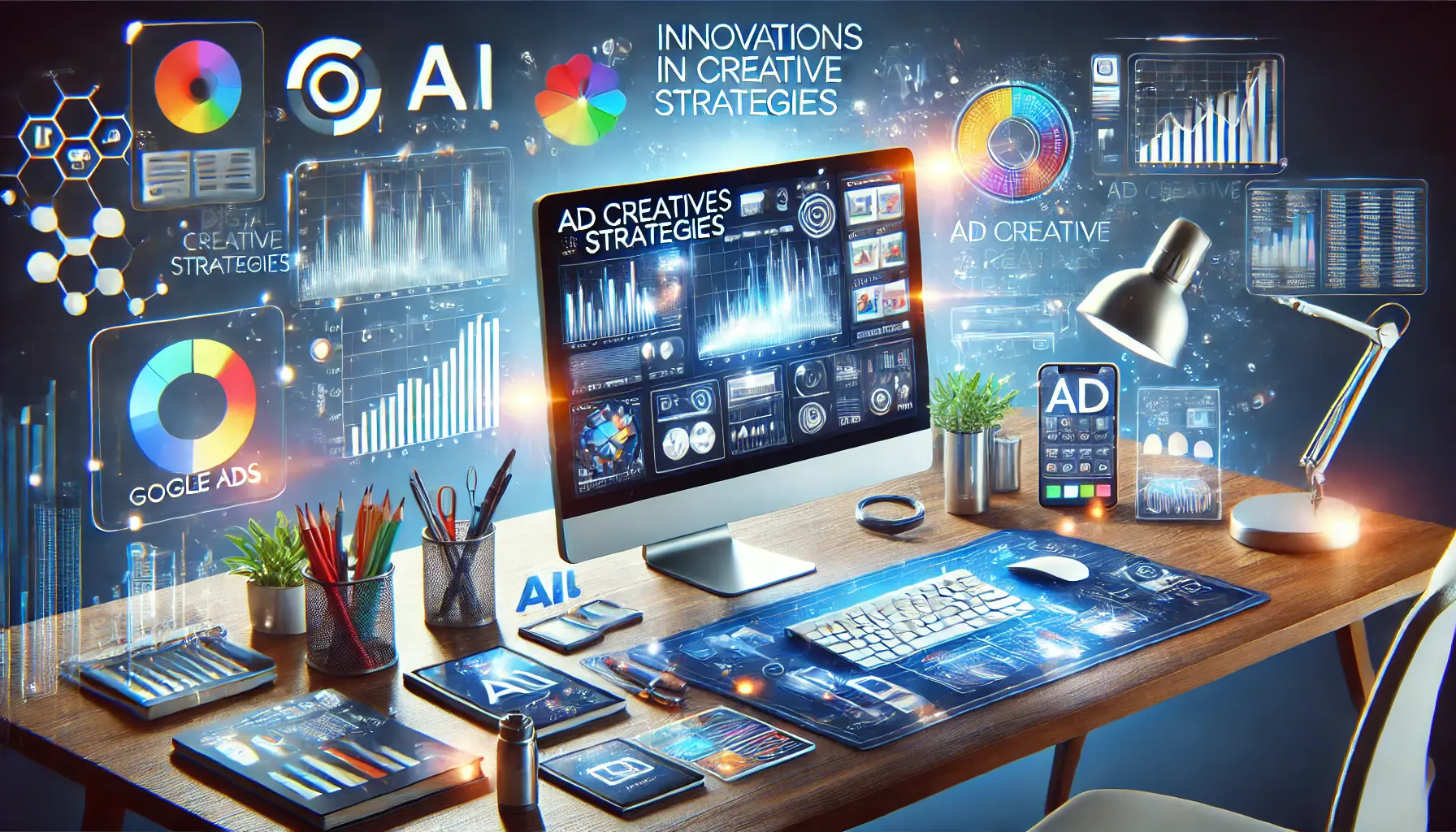Standing out in Google Display Ads today is no easy feat.
In a sea of businesses jockeying for people’s attention, striking graphics and ad copy just don’t cut it for advertisers anymore.
That’s where AI automation comes in: powerful technology that’s increasingly changing the face of online advertising.
AI automation of Google Display Ads makes your campaigns wiser, more productive, and effective.
It enables advertisers to reach the perfect audience, optimize ad performance, and increase ROIReturn on Investment, a measure of the profitability of an investment in ways that are just not possible with traditional methods.
Whether one wants to elevate the advertising strategy to a whole new level or just learn about AI automation and all the different kinds of innovations involved, it’s time to get aboard.
From dynamic audience targeting to creative optimization, AI has transformed the way Google Display Ads work.
Below are the nine most innovative uses of AI that are now changing Google’s Display Ads.
As you begin to understand some of these tools and techniques, you’ll gain insight into how automation is making the most out of your ad campaigns and helping you improve results.
- Introduction to AI Automation in Google Display Ads
- Target Your Audiences Dynamically with AI
- AI-Powered Automated Bidding Strategies
- AI Automation-Powered Creative Optimization
- Predictive Analytics for Campaign Optimization
- Maximizing Google Display Ads with AI Automation
- Commonly Asked Questions About AI Automation in Google Display Ads
Introduction to AI Automation in Google Display Ads
The concept of AI automation within Google Display Ads is not a buzzphrase, but rather a revolution in the way ads are created, targeted, and optimized.
Google has deeply embedded artificial intelligence into its advertising platform to help businesses unlock machine learningA subset of AI where systems improve automatically through experience and data-driven insights that are helping drive better campaign outcomes.
At its very core, AI automation focuses on delivering the right ad to the right person at the right time, replacing traditional manual methods and offering a level of precision and efficiency that simply wasn’t possible before.
By automating processes like bidding, targeting, and creative testing, AI can help advertisers maximize their reach and impact with less manual effort.
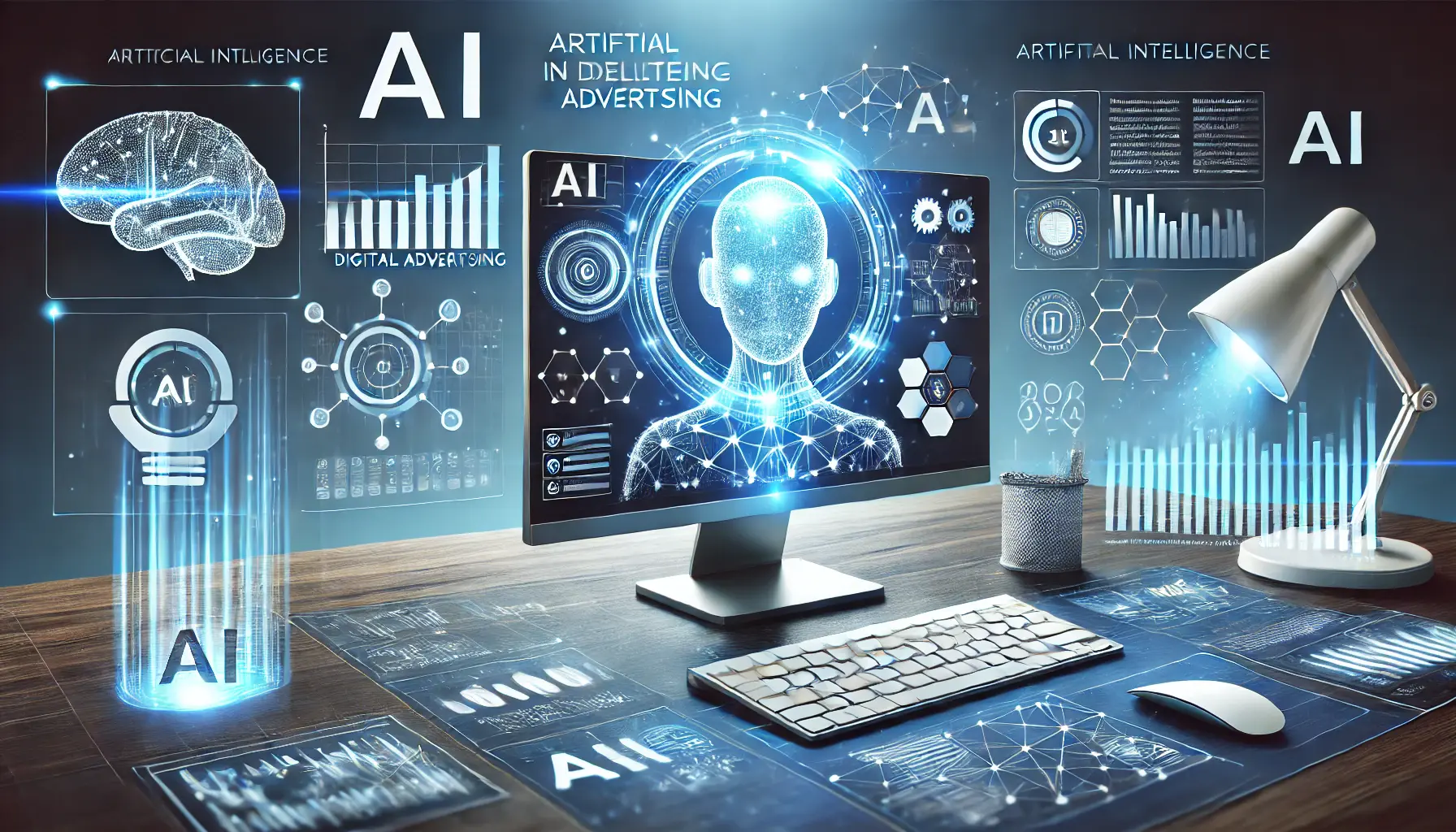
Illustrating AI’s Integral Role in Digital Advertising
Overview of AI’s Role in Digital Advertising
Artificial intelligence has permeated nearly every aspect of digital advertising, from audience analysis to ad delivery.
In the context of Google Display Ads, AI works by analyzing vast amounts of data to make real-time decisions.
Whether automating bid adjustments based on audience performance or surfacing the best creative elements to use, AI saves time for advertisers by freeing them from continuous manual tuning.
Also, AI in advertising is not just about targeting; it is about creating a seamless user experience.
Through analysis of audience preferences and behavior, AI ensures users engage only with those ads that are of interest to them, further increasing their satisfaction.
This focused approach helps not only the advertisers but also cleans up the general online experience for the users.
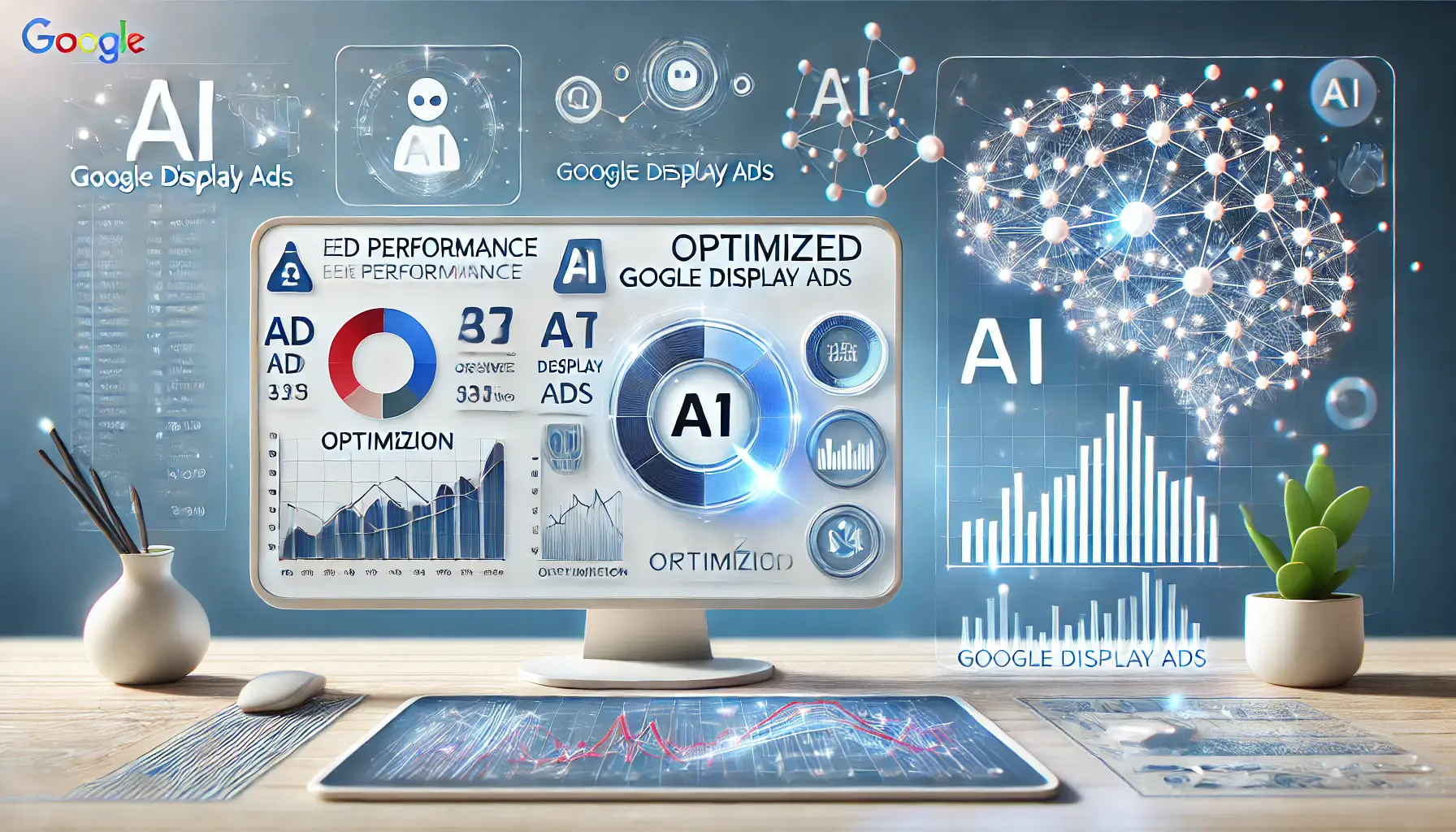
Visualizing the Advantages of AI Automation in Google Display Ads
Benefits of AI Automation for Google Display Ads
AI automation provides a great many advantages to Google Display Ads by allowing marketers to optimize every stage of their campaigns.
Here are some key benefits:
- Time Efficiency: Because AI automates the tasks related to bidding and audience targeting, it saves time that one has to invest in manual tuning.
- Improved Targeting: AI delves into vast amounts of data to deliver ads to the most relevant audiences, increasing their chances of resonating with viewers.
- Higher ROI: Optimized bids and enhanced targeting mean better campaign performance and maximizing ROI.
- Real-Time Adjustments: AI detects changing trends and behaviors and reacts instantly, helping your ads stay relevant and effective.
AI-powered automation gives advertisers a unique competitive edge in a highly competitive environment, making it easier to achieve advertising goals without excessive manual effort.
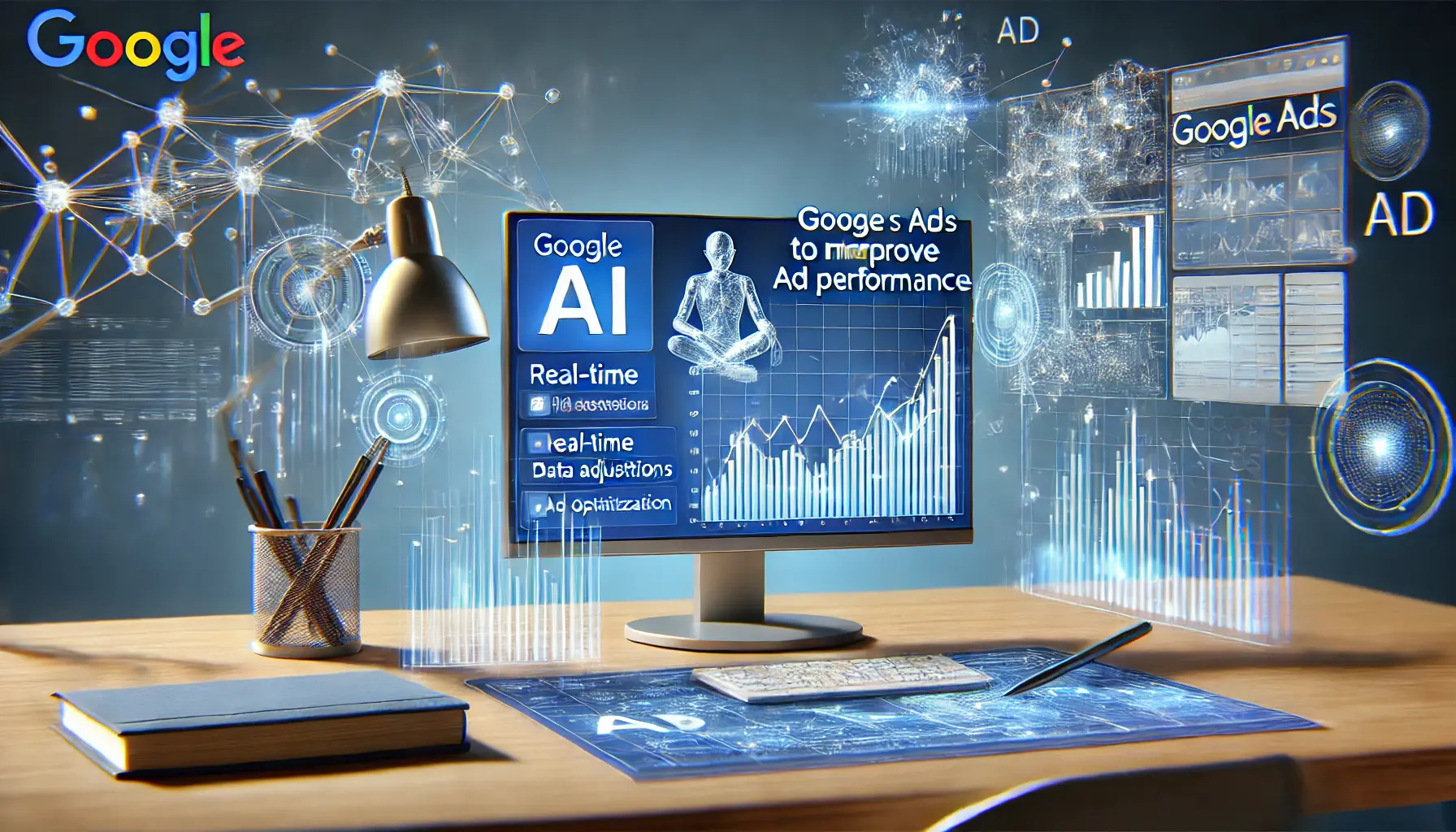
Visualizing Google’s Use of AI to Enhance Ad Performance
How Google Leverages AI to Improve Ad Performance
Google embraces AI across various dimensions of display ads, starting from creative optimization to predictive analyticsThe use of data, statistical algorithms, and AI to forecast future outcomes.
For example, the algorithms at Google’s end can learn the behavior of users to predict which ad is most likely to deliver a click or conversion.
This learning allows ads to perform even better in any fluctuating market conditions and continuously adapt to delivering their best performance.
By pushing the boundaries with AI, Google has ensured higher returns from display ads and, at the same time, greater effectiveness of campaigns while trying to minimize wasted ad spend.
In the end, AI enables businesses to run more effective ads at lower costs and with higher engagement.
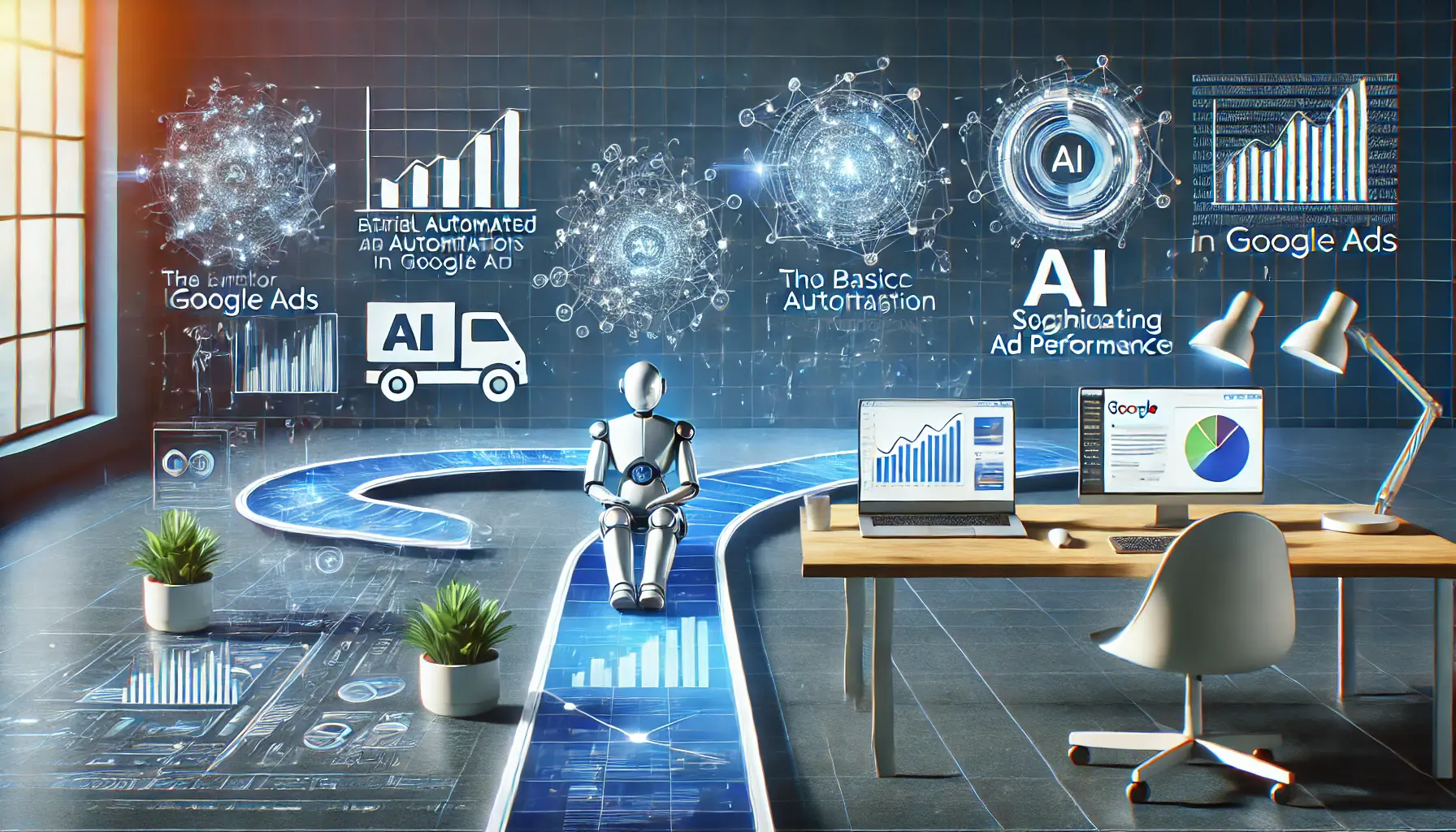
Visualizing the Transformation of Automation in Google Ads
The Evolution of Automation in Google Ads
From early programmatic advertisingAutomated buying and placement of ads through digital platforms to today’s sophisticated AI algorithms, the journey of AI automation in Google Ads has been one of rapid development.
These advancements have paved the way for innovations such as smart bidding, responsive ad formats, and AI-powered predictive analytics.
Understanding this evolution is key for advertisers to maximize Google’s AI capabilities.
Amid rapid feature and tool changes, staying up-to-date allows campaigns to remain competitive in an ever-evolving digital landscape.
AI automation in Google Display Ads allows advertisers to target audiences, optimize ad delivery, and improve ROI, transforming traditional methods into highly efficient campaigns.
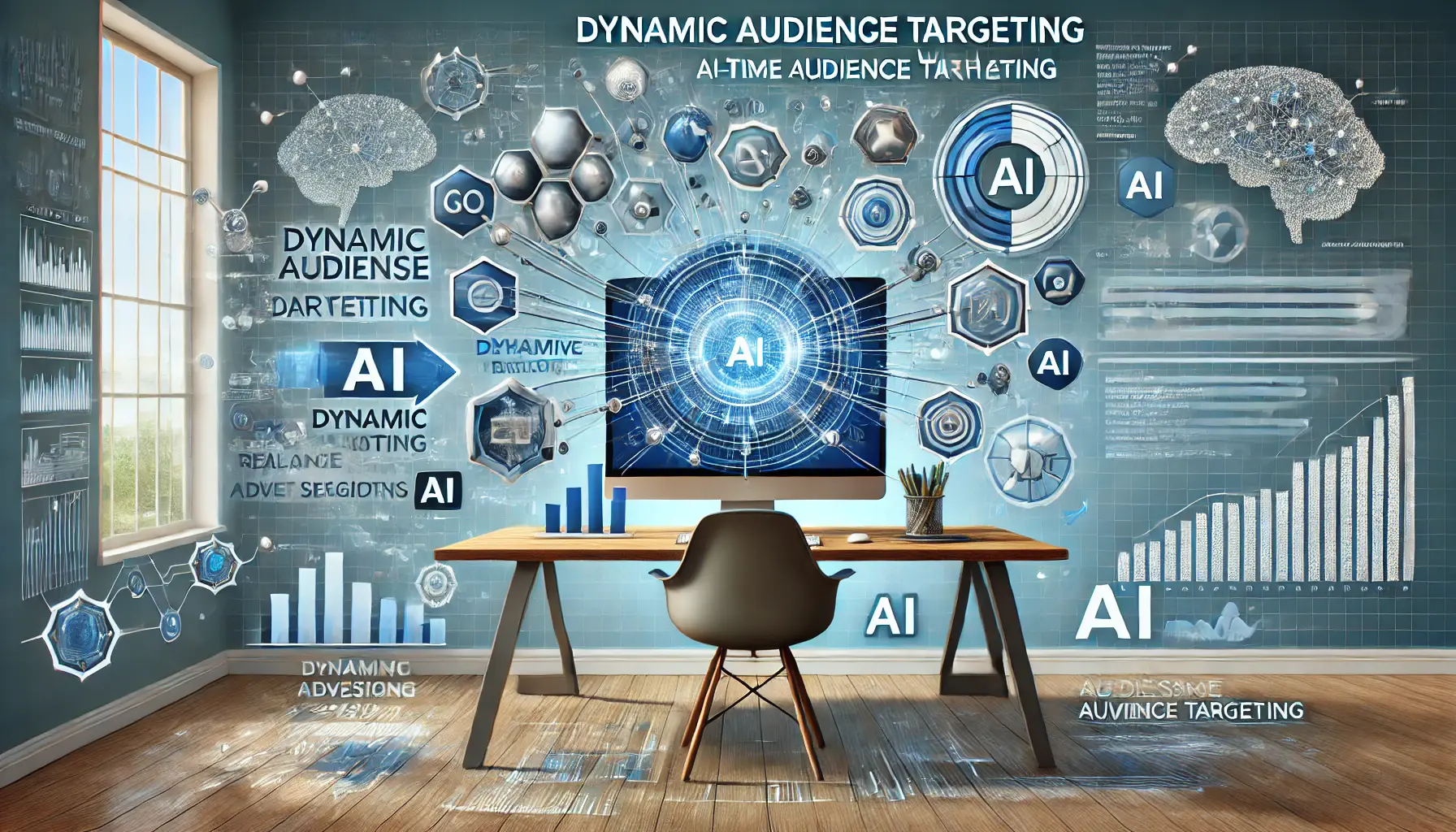
Visualizing Dynamic Audience Targeting with AI in Digital Advertising
Target Your Audiences Dynamically with AI
In today’s competitive landscape, effective targeting in Google Display Ads is crucial for maximizing engagement and ROI.
AI automation offers a powerful tool for dynamic audience targeting, allowing advertisers to connect with audiences more precisely and adaptively.
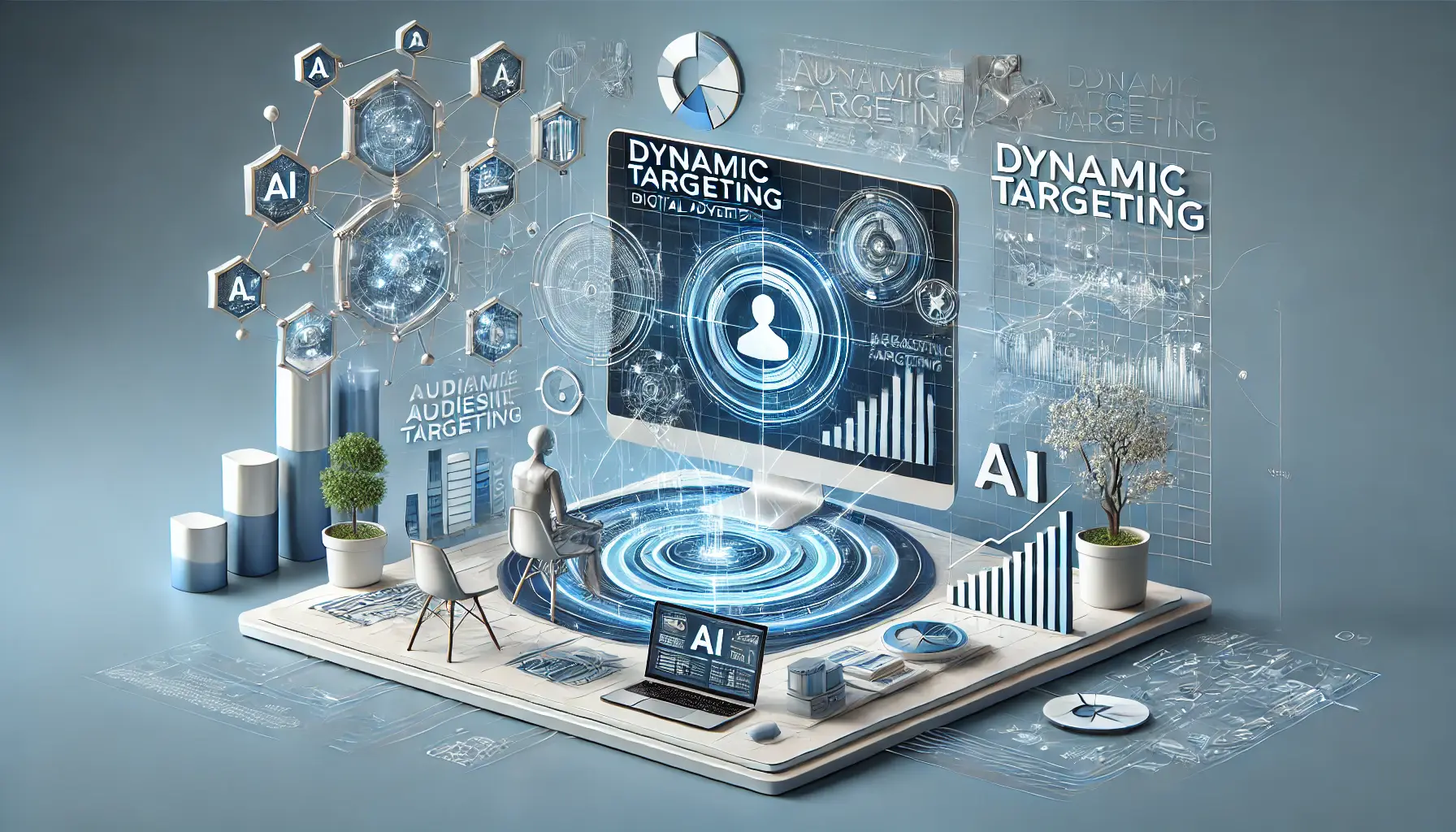
Visualizing Dynamic Targeting in Digital Advertising
Understanding Dynamic Targeting
Dynamic targeting enables real-time adjustment of ad delivery based on user behavior, preferences, and demographic data.
Unlike static targeting methods that rely on pre-defined audience segments, dynamic targetingReal-time ad targeting based on user data and behavior harnesses the continuous power of AI analysis and strategic adaptation.
This approach ensures that ads are shown to users most likely to engage with the content, enhancing both relevance and effectiveness.
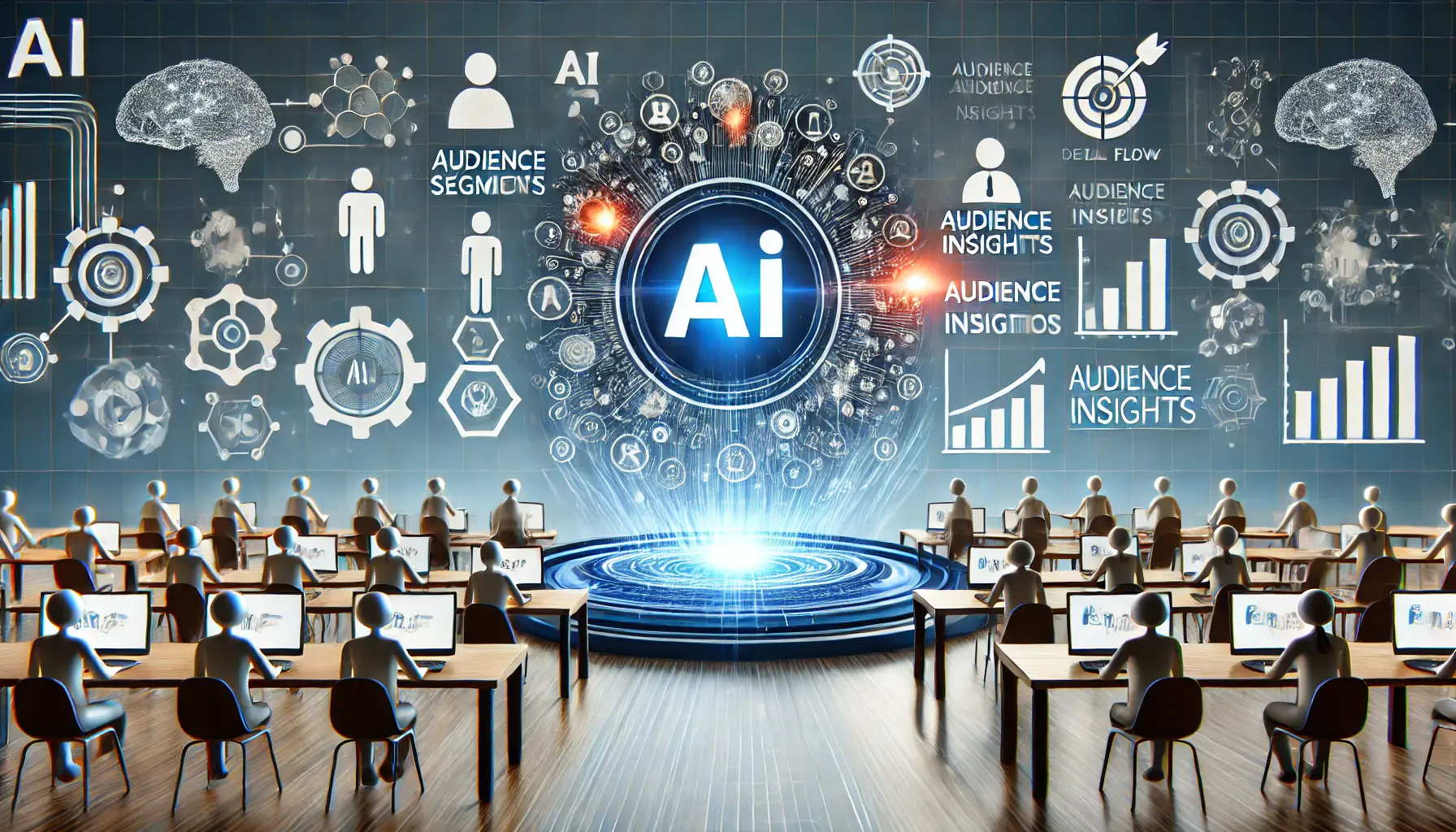
Visualizing AI’s Real-Time Audience Segmentation Process
How AI Identifies Audience Segments in Real-Time
AI can segment audiences by analyzing factors such as browsing history, search queries, and online interactions.
This real-time analysis enables advertisers to make immediate adjustments to targeting parameters, ensuring ads reach the most relevant users at the best possible moment.
Such responsiveness enhances the ad’s impact and maximizes engagement.
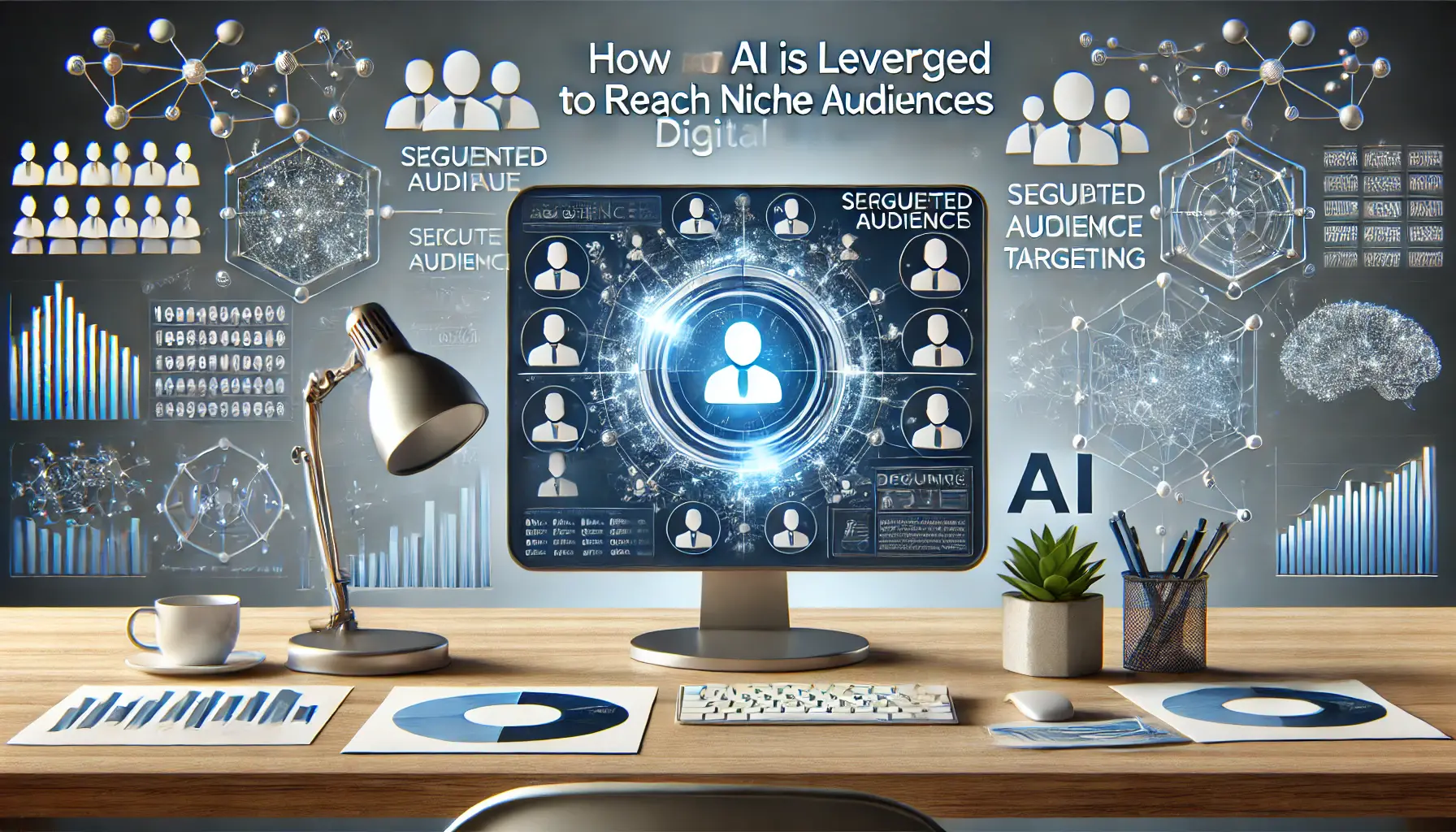
Visualizing AI’s Role in Targeting Niche Audiences
Leveraging AI to Reach Niche Audiences
AI-driven dynamic targeting also empowers advertisers to reach niche audiences that may be overlooked by traditional methods.
AI can uncover micro-segments within larger audiences, allowing advertisers to tailor their messages to specific interests and behaviors.
This level of personalization often leads to increased engagement and higher conversion rates.
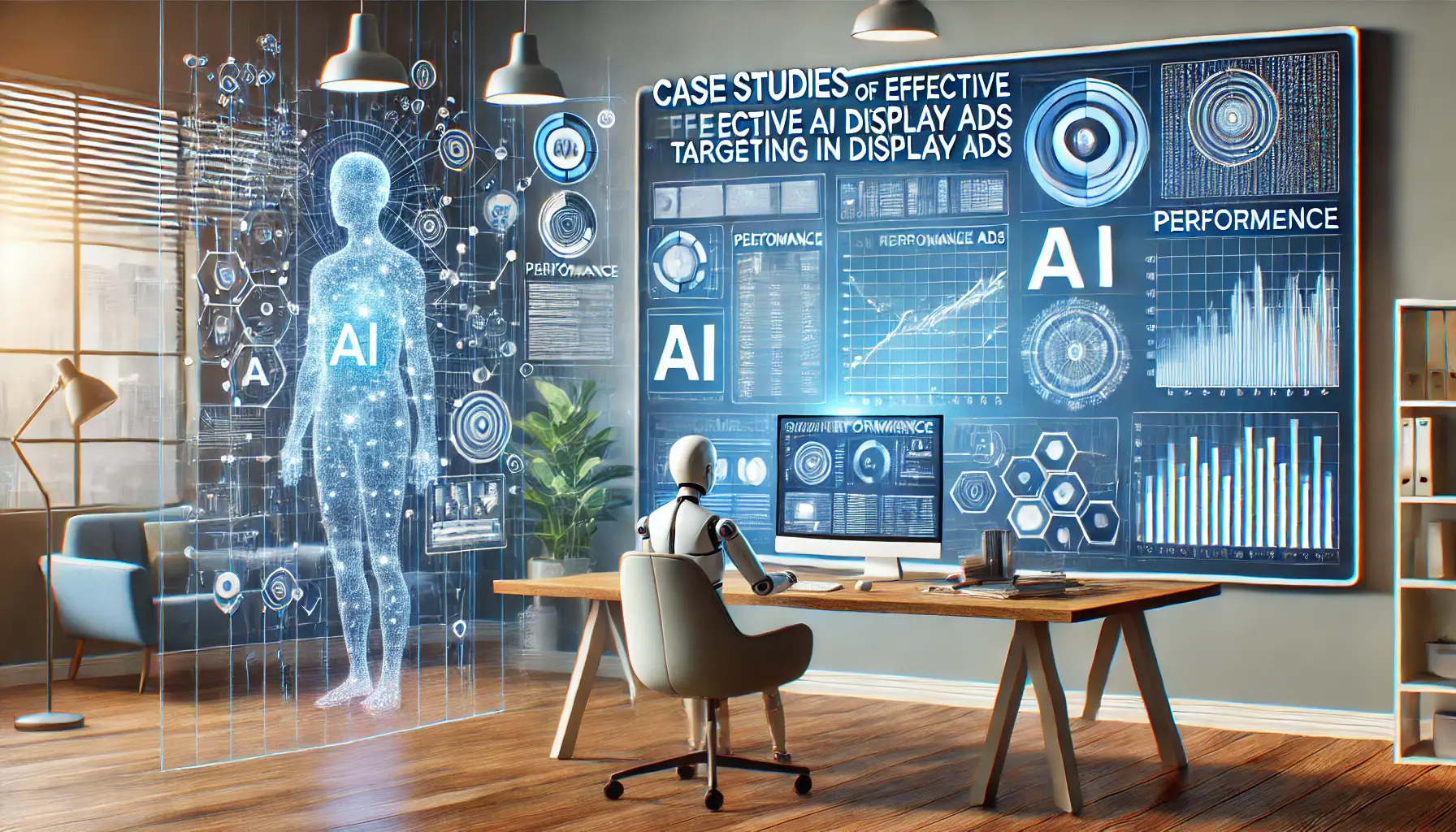
Illustrating Effective AI Targeting in Display Ads with Case Studies
Case Studies of Effective AI Targeting in Display Ads
Many companies have leveraged AI-powered dynamic targeting to enhance campaign outcomes.
For instance, a leading e-commerce company used AI to analyze customer purchasing behaviors, delivering personalized product recommendations through display ads.
This strategy resulted in a significant increase in click-through rates and sales.
Similarly, a travel agency used AI to target users based on recent search history and travel preferences, which led to higher user engagement and increased bookings.
By embracing AI automation for dynamic audience targeting, advertisers can achieve greater precision and effectiveness in Google Display Ads, ultimately driving superior outcomes and maximizing return on investment.
Dynamic targeting through AI ensures ads reach the most relevant audiences by analyzing user behavior and preferences in real time.
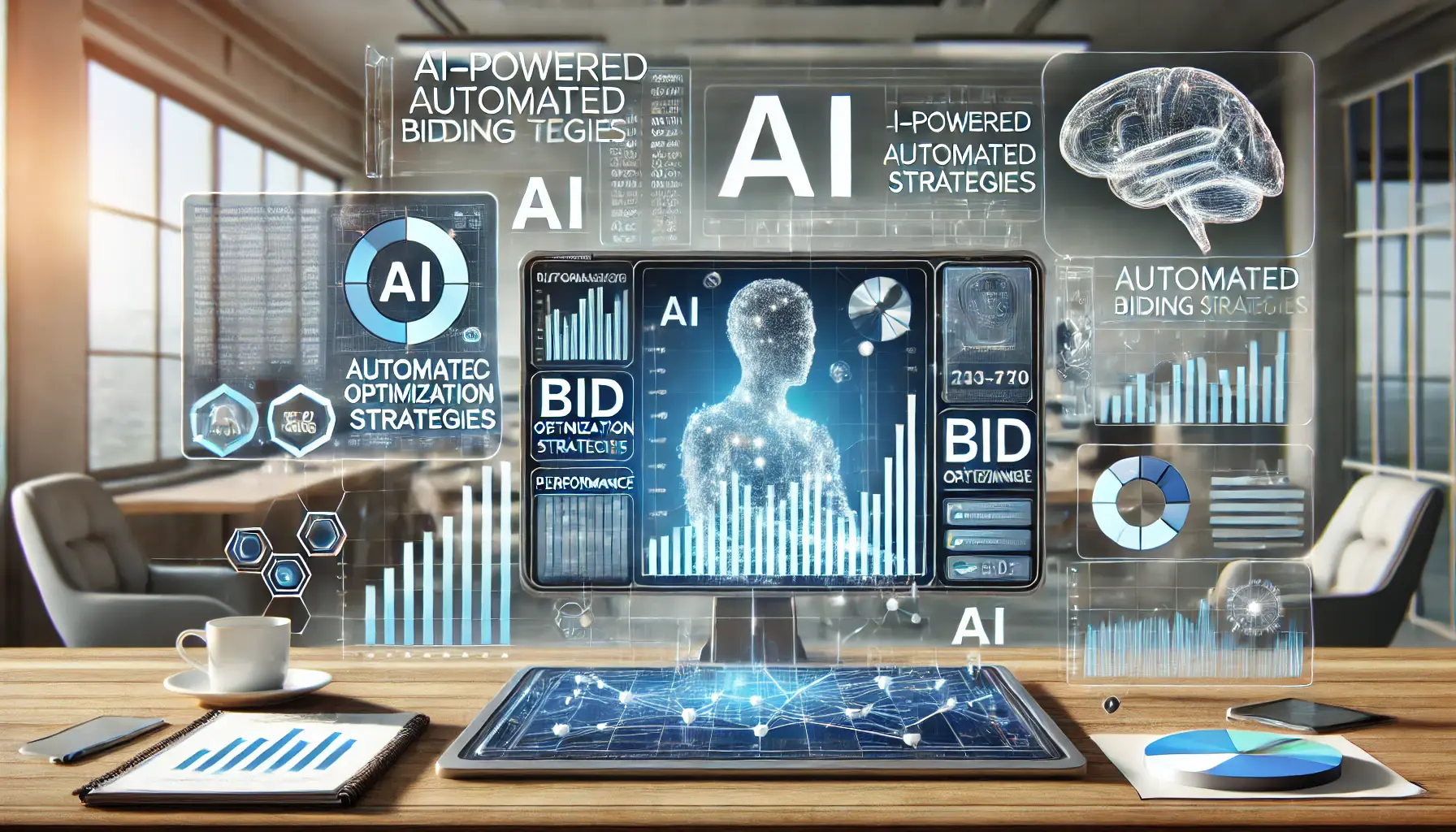
Visualizing AI-Powered Automated Bidding Strategies in Digital Advertising
AI-Powered Automated Bidding Strategies
In today’s fast-paced and competitive digital advertising landscape, determining the appropriate bid for your ads can be a time-consuming and complex task.
AI automation takes bidding to a whole new level by introducing automated bidding strategies in Google Display Ads, allowing advertisers to optimize their bids in real time for better performance.
Instead of manually setting bid amounts for each keyword or ad placement, AI analyzes various signals to determine the optimal bid for each auction.
This approach not only saves time but also enhances campaign efficiency.
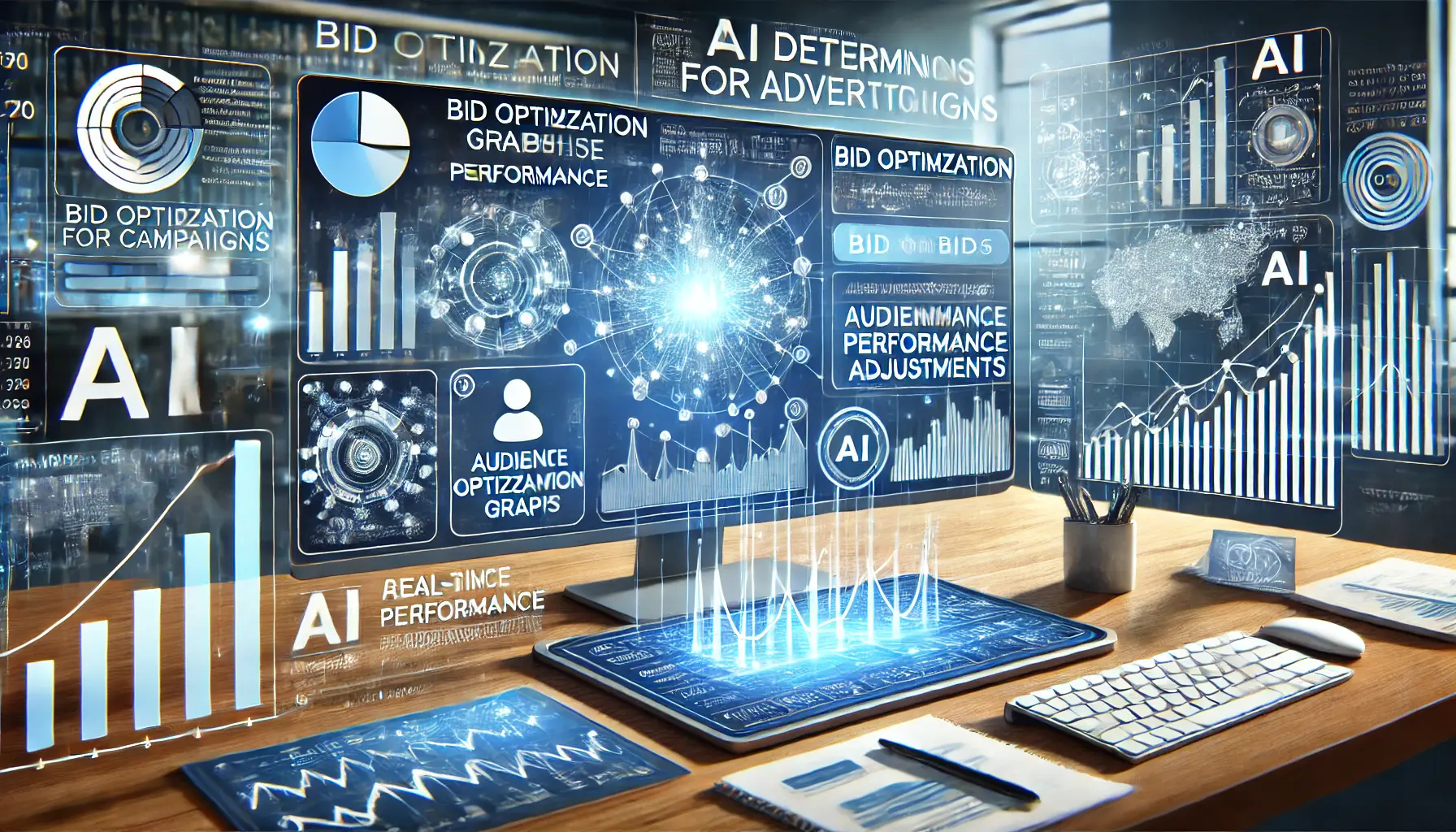
Illustrating How AI Determines the Best Bids for Advertising Campaigns
How AI Determines Optimal Bids for Campaigns
AI-powered bidding strategies consider numerous factors to set the most effective bid for each ad auction.
These include:
- User Intent: Analyzing search queries and user behavior to gauge the intent behind each search.
- Device Type: Adjusting bids based on whether the user is on a mobile device, tablet, or desktop.
- Location: Considering the user’s geographic location to tailor bids accordingly.
- Time of Day: Modifying bids based on peak engagement times.
- Remarketing Lists: Targeting users who have previously visited your website or engaged with your ads.
By processing these signals in real-time, AI ensures that your bids are optimized for each unique auction, maximizing the chances of achieving your desired outcomes.

Visualizing the Benefits of Machine Learning in Bid Optimization for Ads
Benefits of Machine Learning in Bid Optimization
Machine learning in bid optimization offers several benefits:
- Efficiency: Automates the bidding process, reducing the time spent on manual bidding adjustments.
- Precision: Analyzes large amounts of data to make informed bidding decisions.
- Flexibility: Continuously learns and adapts to changes in market conditions and user behavior.
- Performance: Improves campaign performance by aligning bids with your specific goals.
These benefits collectively contribute to highly effective and efficient advertising campaigns.
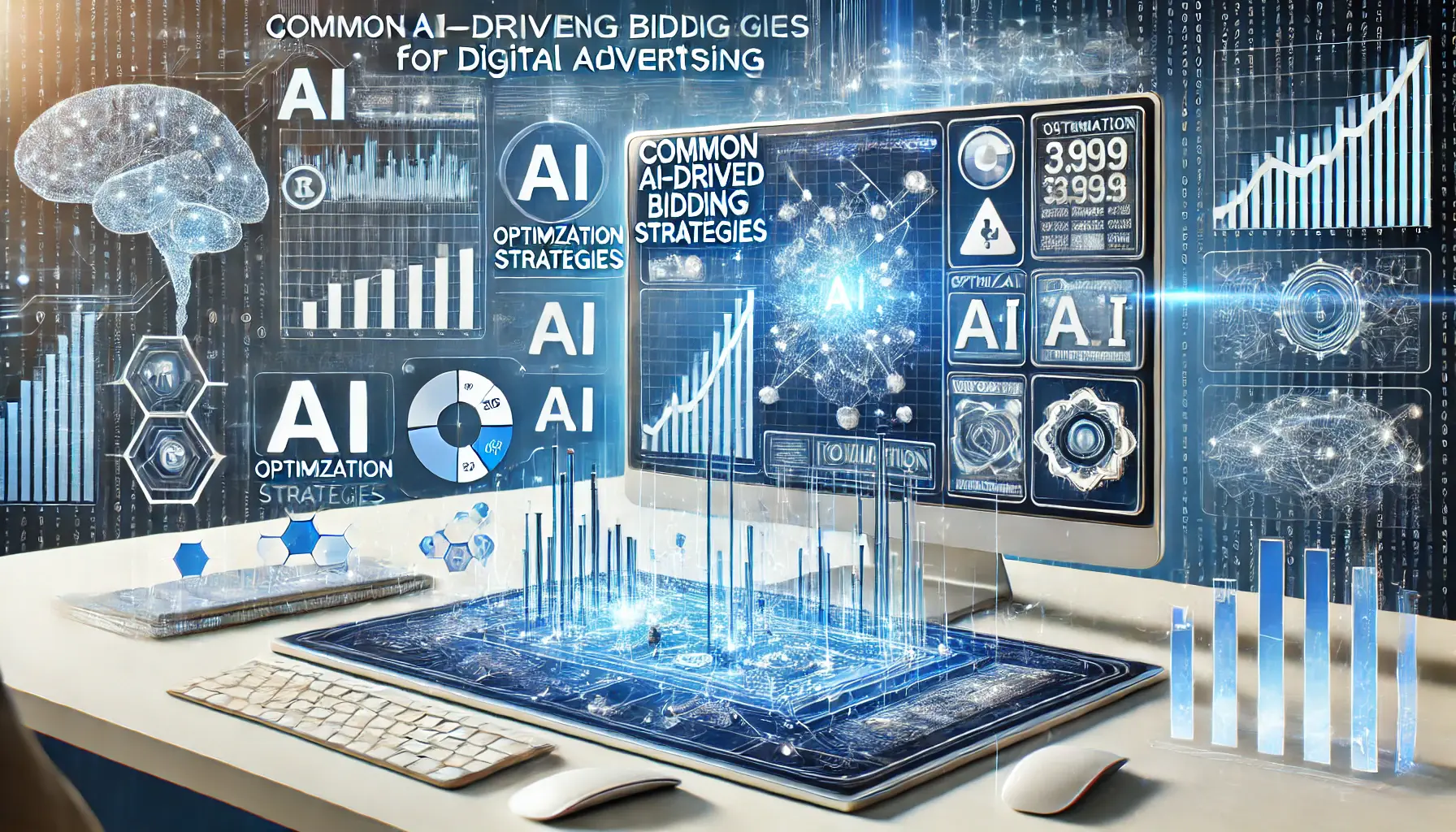
Visualizing Common AI-Driven Bidding Strategies in Digital Advertising
Common AI-Driven Bidding Strategies to Explore
Google Ads offers various AI-driven bidding strategies based on your campaign objectives:
- Target CPA (Cost Per Acquisition): Sets bids to help acquire as many conversions as possible at your target cost per action.
- Target ROAS (Return on Ad Spend): Optimizes bids to maximize conversion value while achieving a target return on ad spend.
- Maximize Conversions: Automatically sets bids to drive the most conversions within your budget.
- Maximize Conversion Value: Focuses on achieving the highest conversion value within your budget.
- Enhanced CPC (Cost Per Click): Adjusts manual bids to help get more conversions while aiming to achieve the same cost per conversion.
Selecting the right strategy depends on your specific campaign goals and performance metrics.
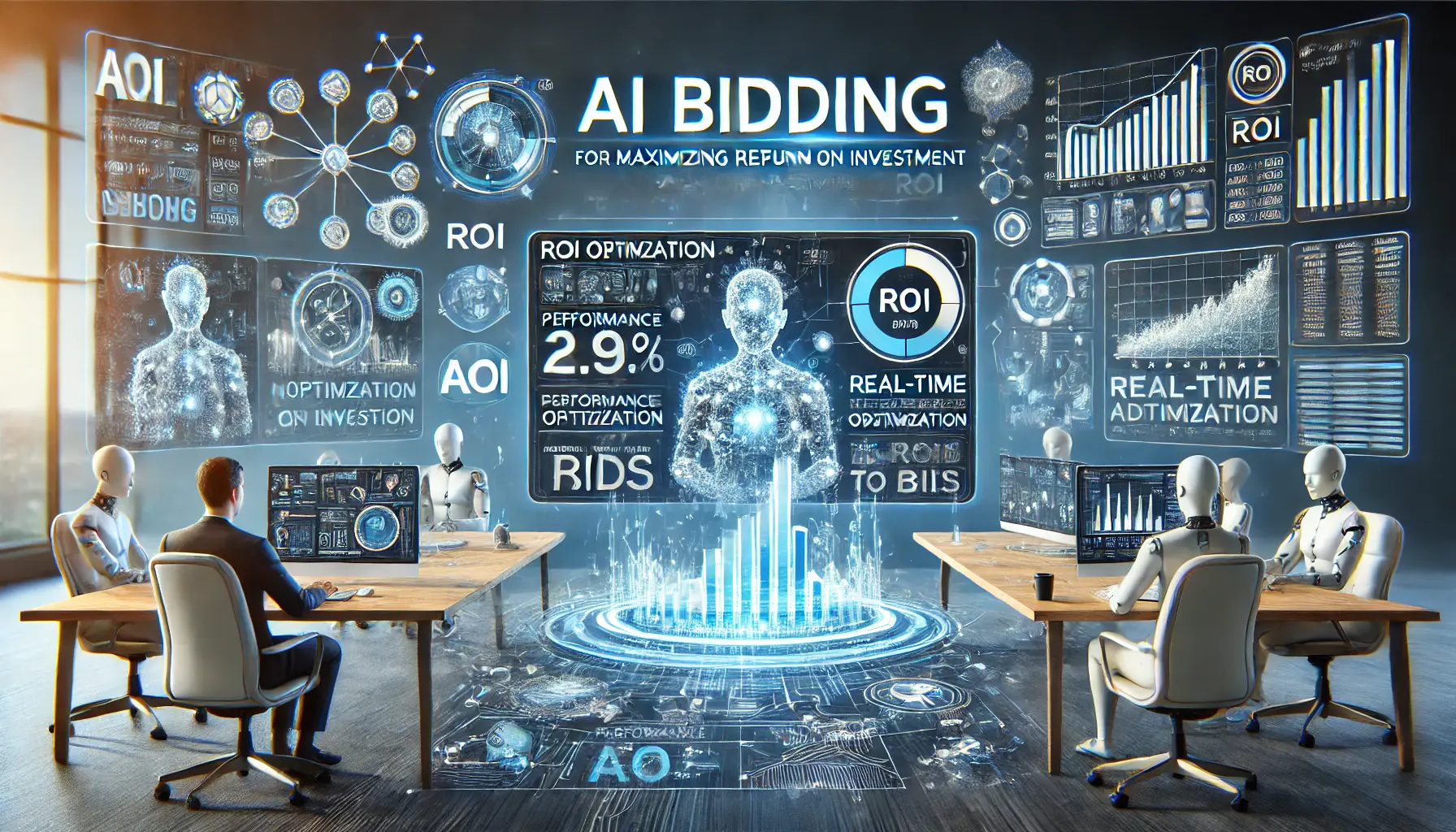
Visualizing AI Bidding Strategies for Maximizing ROI in Digital Advertising
Using AI Bidding for Maximum ROI
To leverage AI bidding effectively for maximum return on investment:
- Define Clear Goals: Establish specific objectives, such as increasing conversions or maximizing conversion value.
- Implement Accurate Conversion Tracking: Ensure your conversion tracking is set up correctly to provide reliable data for AI optimization.
- Monitor Performance: Regularly review campaign performance and adjust strategies as needed.
- Allow Time for Learning: Give the AI system sufficient time to learn and optimize based on your campaign data.
By following these steps, you can effectively harness the power of AI-driven bidding strategies to enhance your Google Display Ads campaigns and achieve superior results.
AI-based automated bidding strategies help optimize campaign costs by setting the most effective bid based on real-time data, improving ROI.
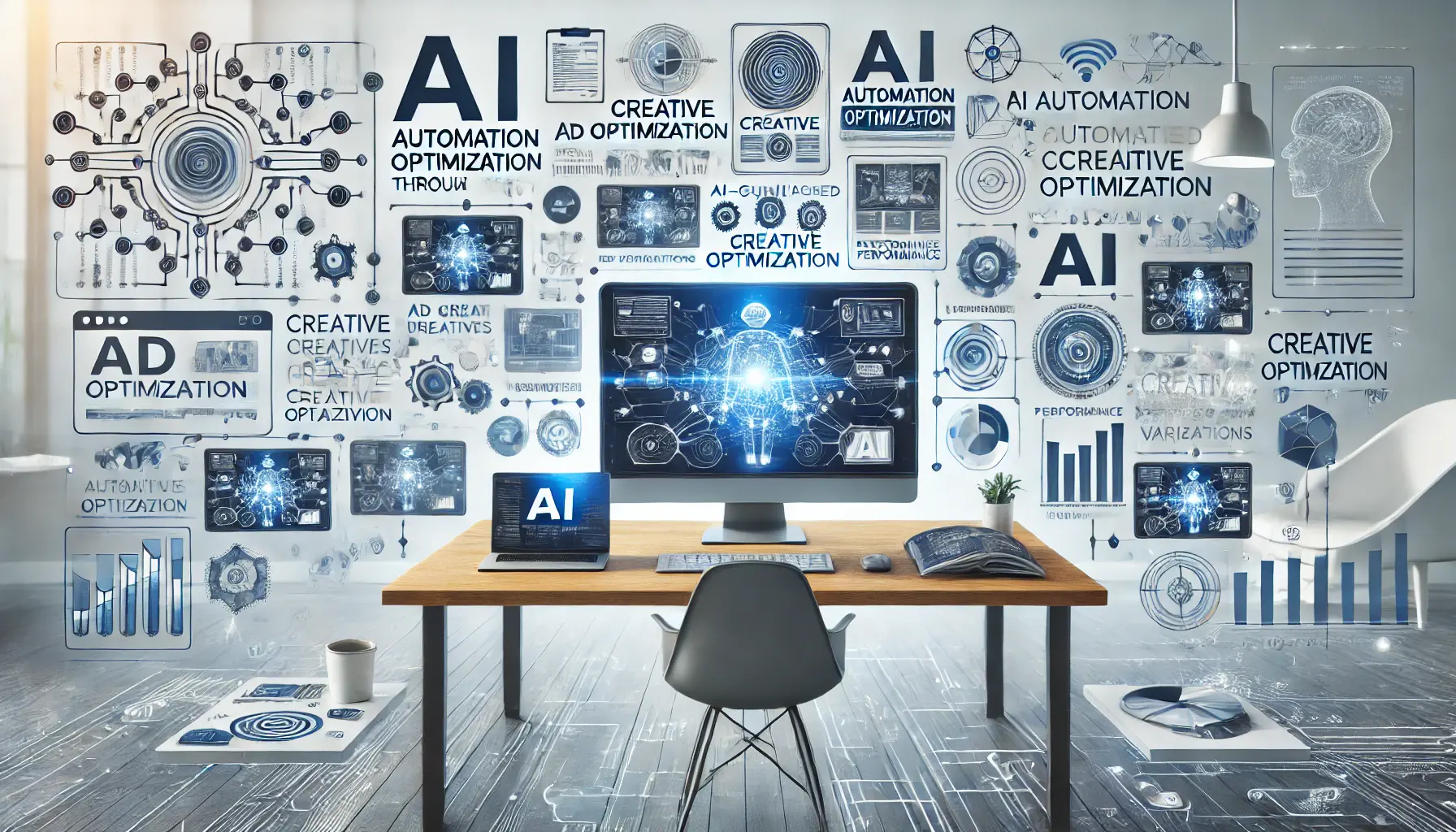
Visualizing AI-Powered Creative Optimization in Digital Advertising
AI Automation-Powered Creative Optimization
In today’s fast-paced digital advertising landscape, capturing audience attention requires more than just striking visuals and compelling copy.
AI automation has transformed creative optimization for Google Display Ads, enabling advertisers to craft highly personalized, impactful ad creatives that resonate across diverse audiences.

Visualizing AI-Powered Creative Asset Creation for Digital Ads
AI-Powered Creative Asset Creation
Artificial intelligence allows advertisers to generate a variety of ad assets by analyzing audience preferences and behaviors.
By leveraging AI, marketers can create ad creative variants tailored to different segments of their target audience, ultimately improving engagement and conversion rates.
For example, Google’s AI-powered tools can automatically create assets for both Search and Performance Max campaigns, delivering more relevant ads to users.

Visualizing Personalization and Dynamic Content in Digital Advertising
Personalization and Dynamic Content
AI enables a high degree of personalization by dynamically adjusting ad creative elements based on user data.
This ensures that each user sees ads relevant to their interests, needs, and behaviors, resulting in enhanced relevance and engagement.
AI-powered dynamic content can also adapt in real-time, presenting users with products or services that align with their immediate needs or preferences.
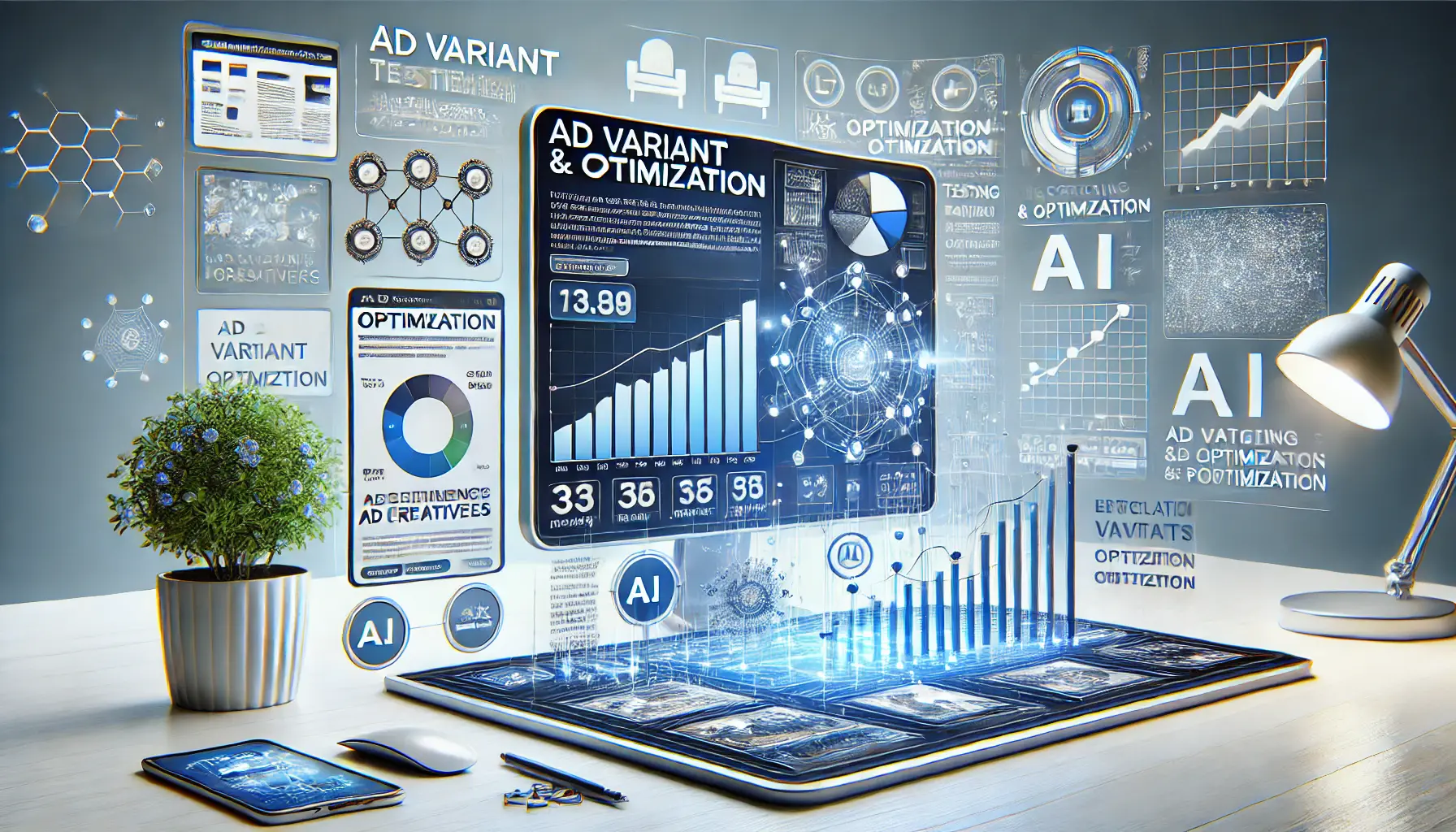
Visualizing Ad Variant Testing and Optimization in Digital Advertising
Ad Variant Testing and Optimization
AI streamlines the testing of different ad creatives through automated A/B and multivariate testing.
By analyzing performance data, AI identifies the top-performing ad variations, allowing advertisers to run highly effective and optimized campaigns.
This continuous testing and optimization process ensures that ads remain relevant and effective over time.
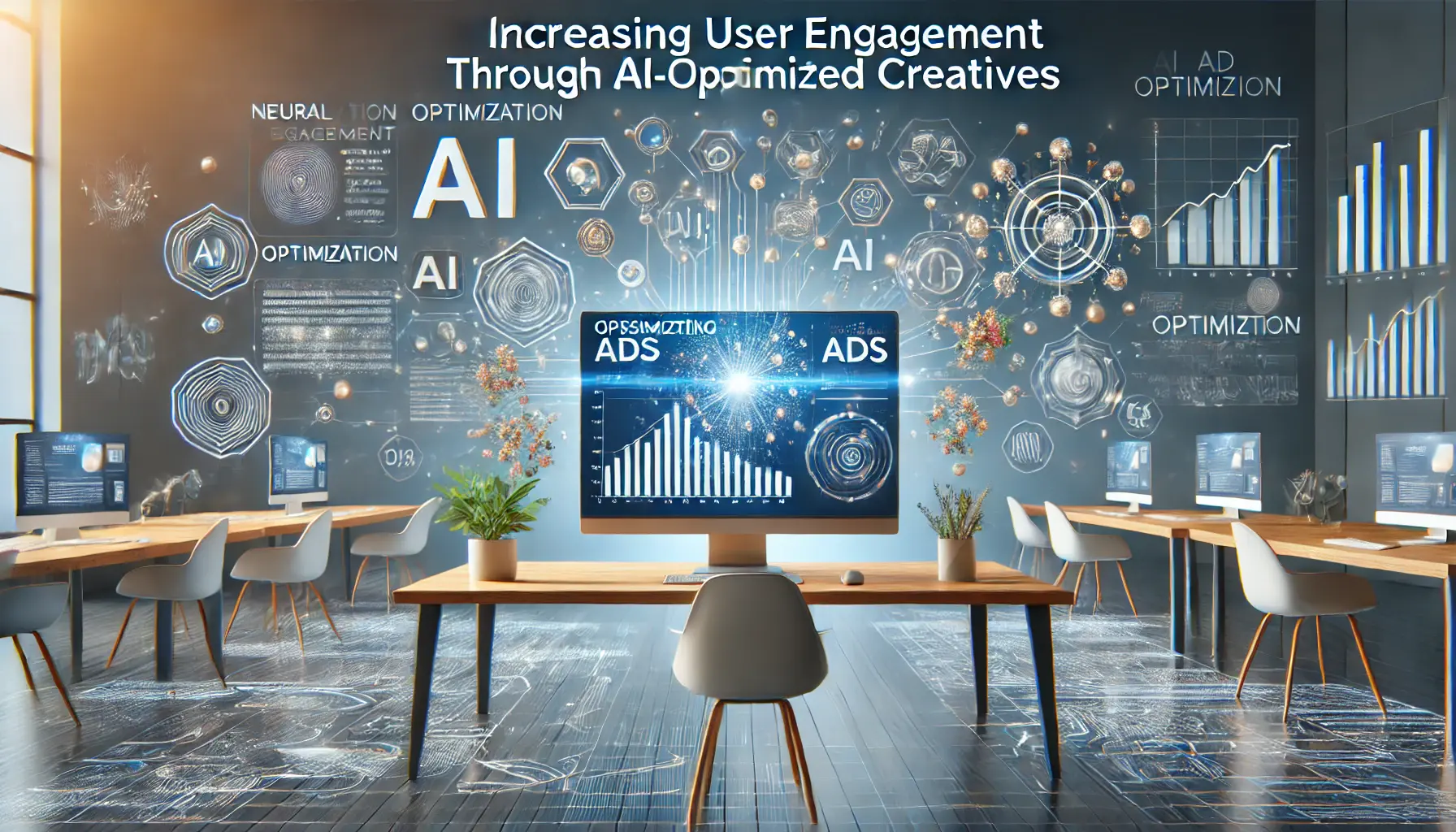
Visualizing AI-Optimized Creatives for Enhanced User Engagement
Increasing User Engagement through AI-Optimized Creatives
AI-optimized creatives are designed to capture users’ attention by aligning with their preferences and behaviors.
By delivering personalized and dynamic content, these ads are more likely to engage users, leading to higher click-through rates and conversions.
The use of AI in creative optimization not only increases user engagement but also enhances the overall effectiveness of advertising campaigns.
Embracing AI automation in creative optimization empowers advertisers to deliver Google Display Ads that are more personalized, engaging, and effective, ultimately driving better outcomes and maximizing return on investment.
AI enhances creative optimization, enabling personalized, impactful ad creatives that increase engagement and drive conversions.
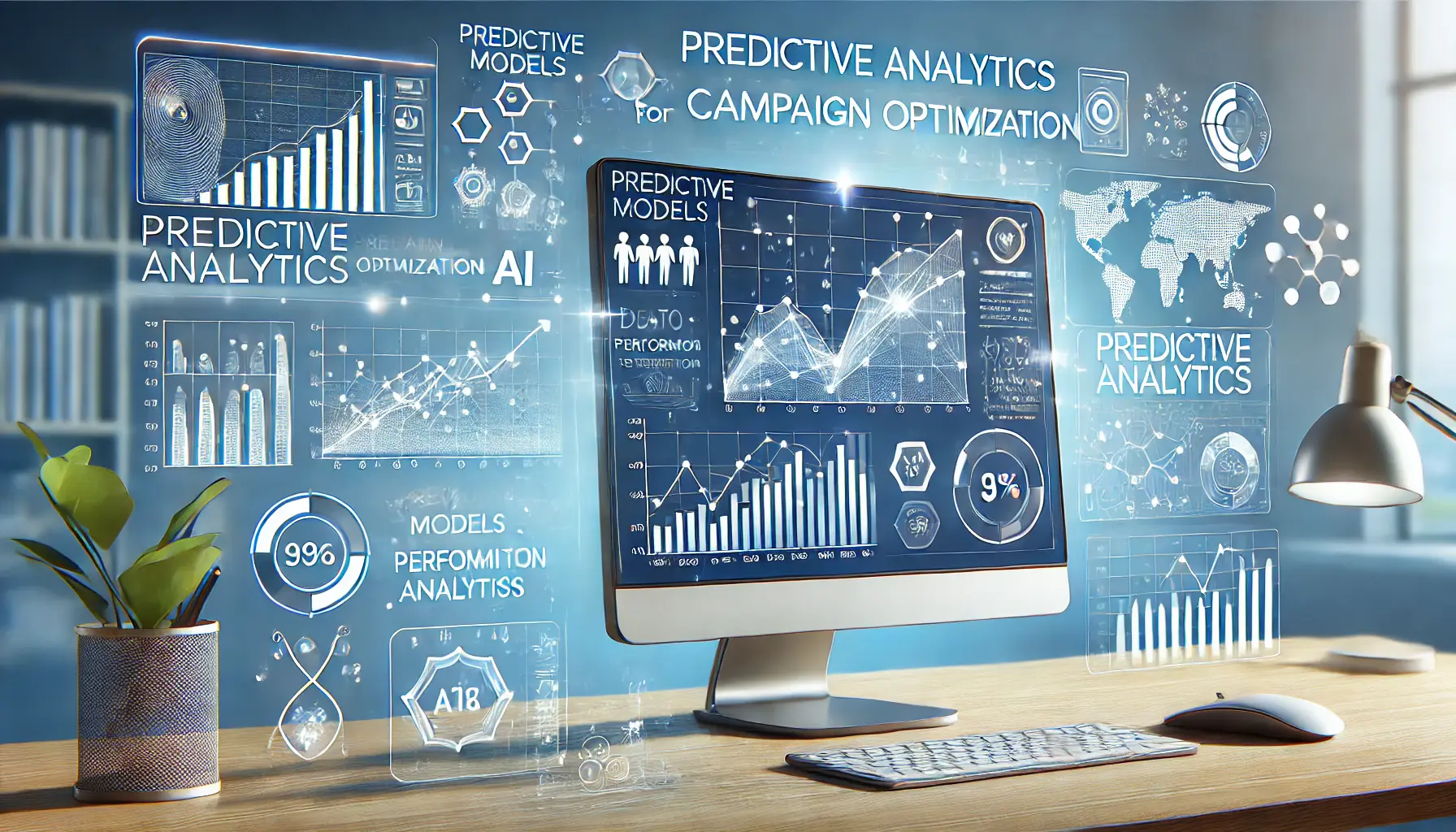
Visualizing Predictive Analytics for Optimizing Digital Ad Campaigns
Predictive Analytics for Campaign Optimization
The ever-changing face of digital advertising requires advertisers to stay updated on trends and user behaviors.
AI automation empowers Google Display Ads with predictive analytics, enabling advertisers to anticipate the future performance of their campaigns and proactively optimize them.
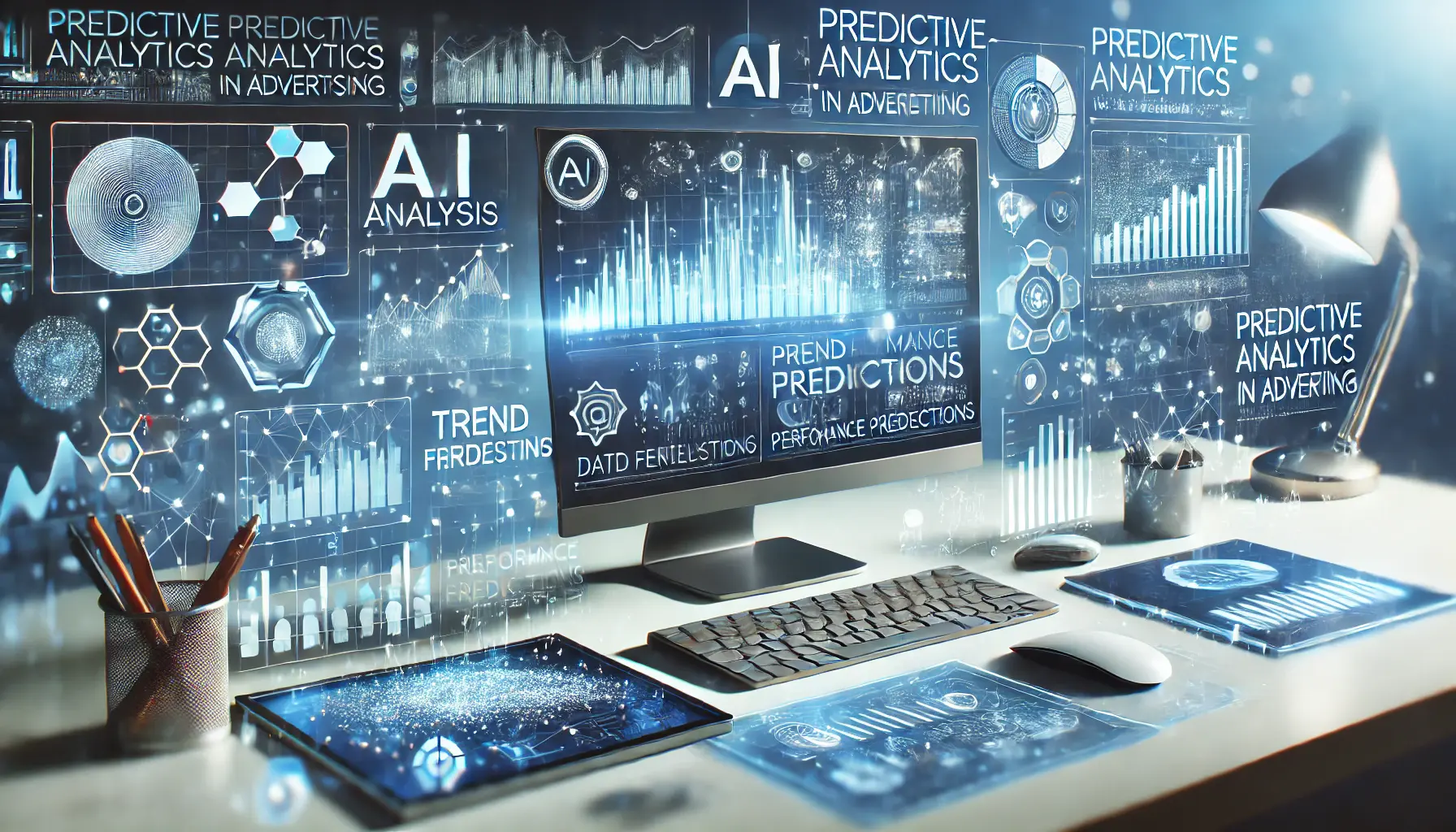
Visualizing Predictive Analytics in Digital Advertising
Understanding Predictive Analytics in Advertising
Predictive analytics combines historical data with machine learning and statistical algorithms to forecast future events.
In advertising, it projects user behaviors, conversion probabilities, and campaign performance metrics.
These insights allow advertisers to make informed decisions and adjust strategies accordingly.
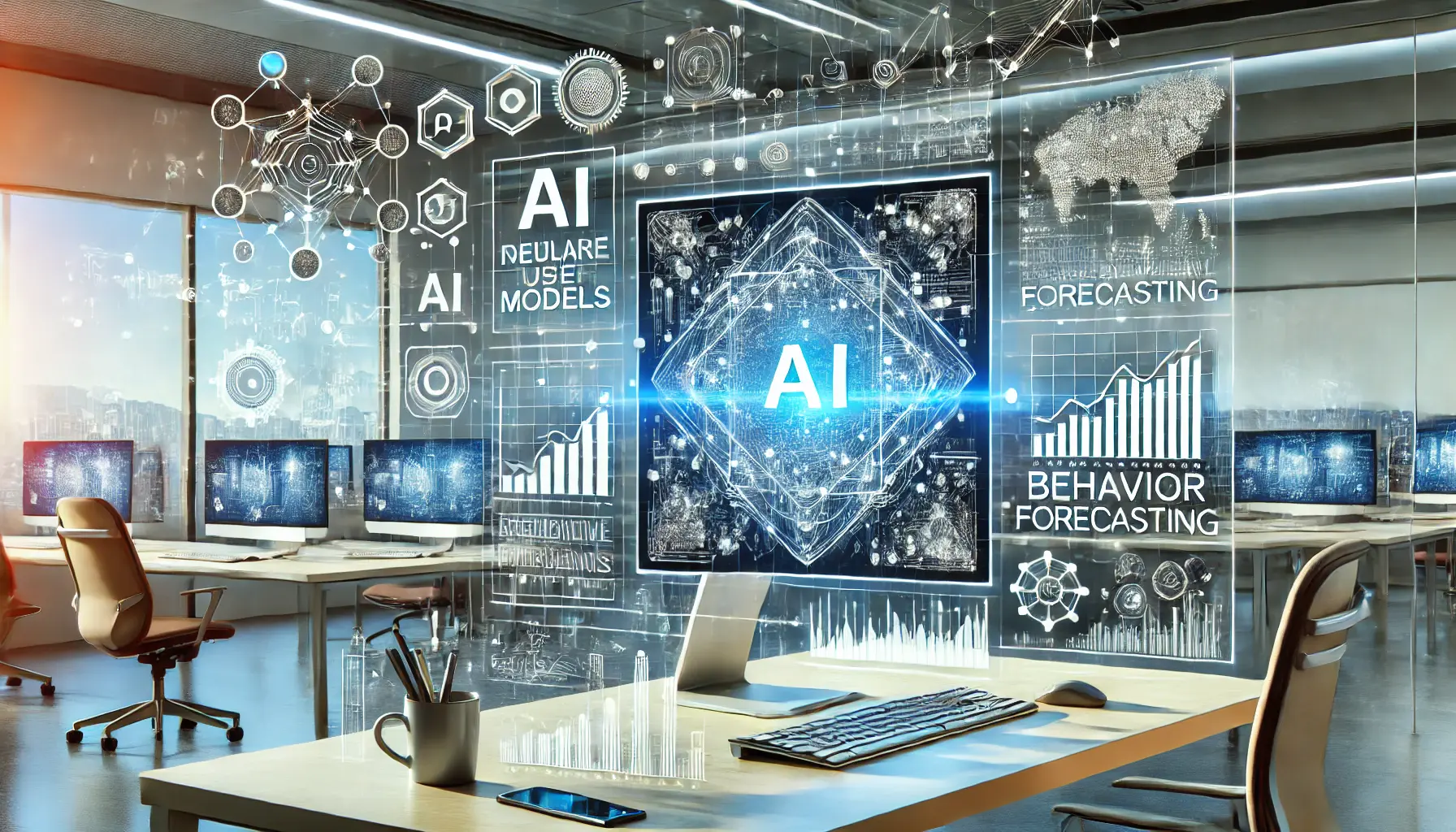
Visualizing How AI Forecasts User Behavior and Trends in Advertising
How AI Forecasts User Behavior and Trends
AI works with vast volumes of information to identify patterns and correlations that would often be imperceptible to the human eye.
For instance, it can:
- Analyze Browsing Histories: Understand user interests and predict future engagements.
- Monitor Seasonal Trends: Anticipate changes in user behavior during holidays or special events.
- Assess Engagement Metrics: Measure past interactions to predict ad performance.
By processing this data, AI provides actionable insights that guide campaign adjustments.
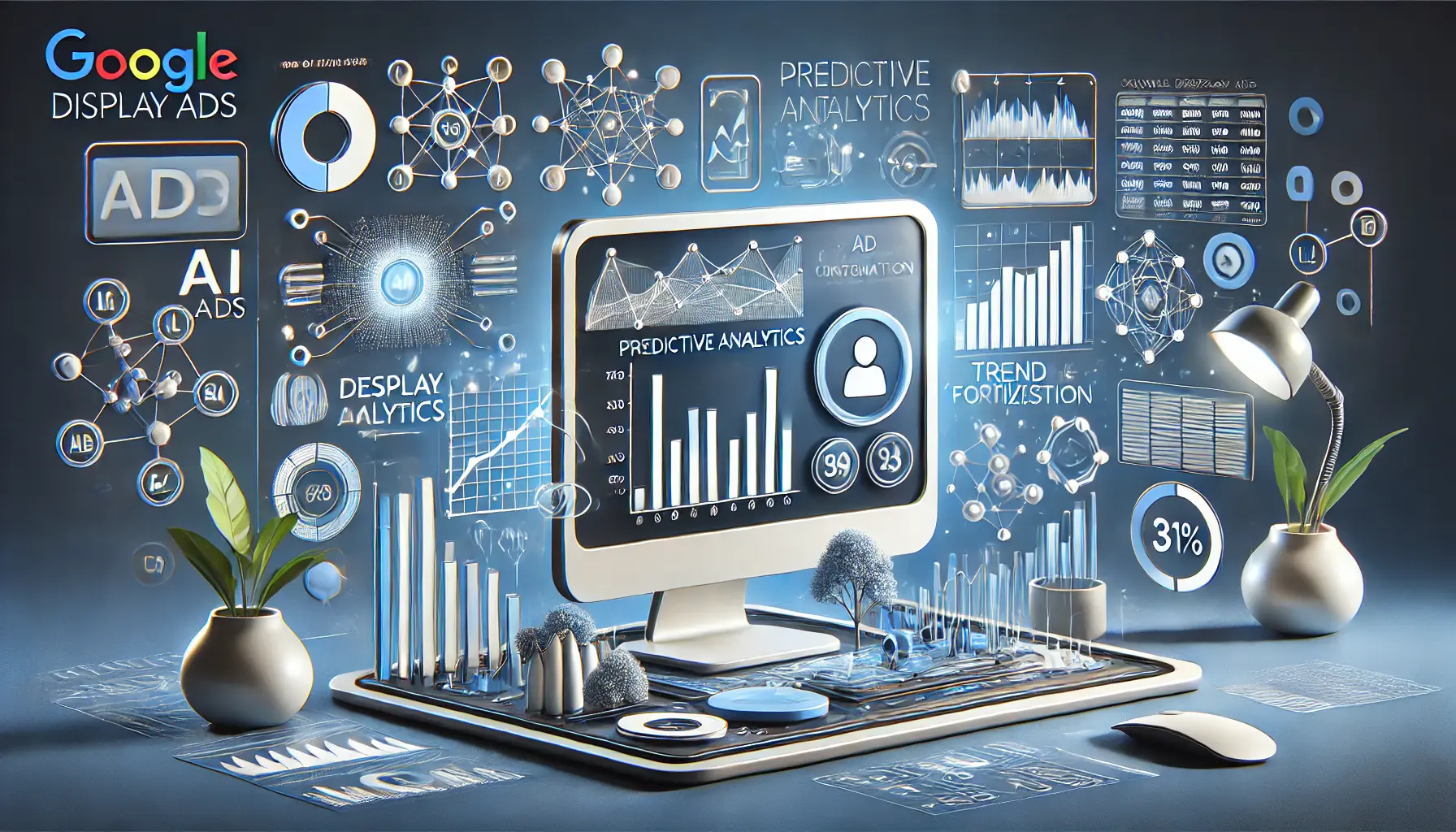
Visualizing the Use of Predictive Analytics in Google Display Ads
Application of Predictive Analytics in Google Display Ads
To implement predictive analytics successfully in your campaigns:
- Use Google Analytics 4: This tool offers predictive metrics like purchase probability and churn probability, helping identify high-value audiences.
- Set Up Conversion Tracking: Accurate data collection feeds AI models with reliable information.
- Define Clear Goals: Establish specific objectives, such as increasing conversions or reducing churn, to align predictive insights with your strategy.
These measures help the AI system produce relevant forecasts that can maximize campaign performance.
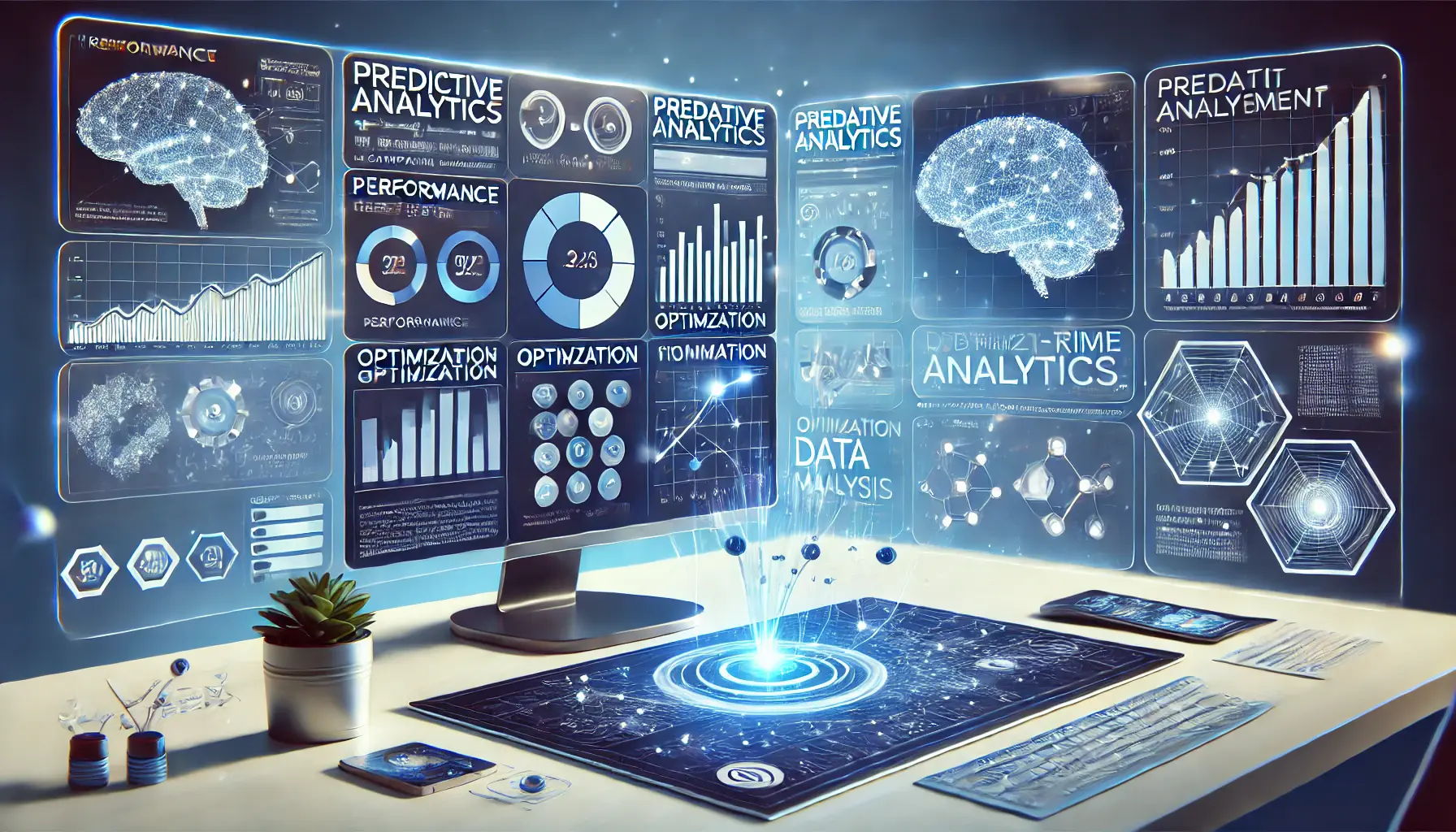
Visualizing the Benefits of Predictive Analytics in Campaign Management
Benefits of Predictive Analytics in Campaign Management
Predictive analytics offers several key benefits:
- Proactive Optimization: Adjust campaigns based on anticipated user behaviors rather than past data.
- Resource Allocation: Allocate budgets more effectively by focusing on high-potential segments.
- Better Targeting: Identify and engage users likely to convert, improving ROI.
- Risk Mitigation: Anticipate and address potential issues before they impact performance.
Collectively, these improvements contribute to more effective and efficient advertising strategies.
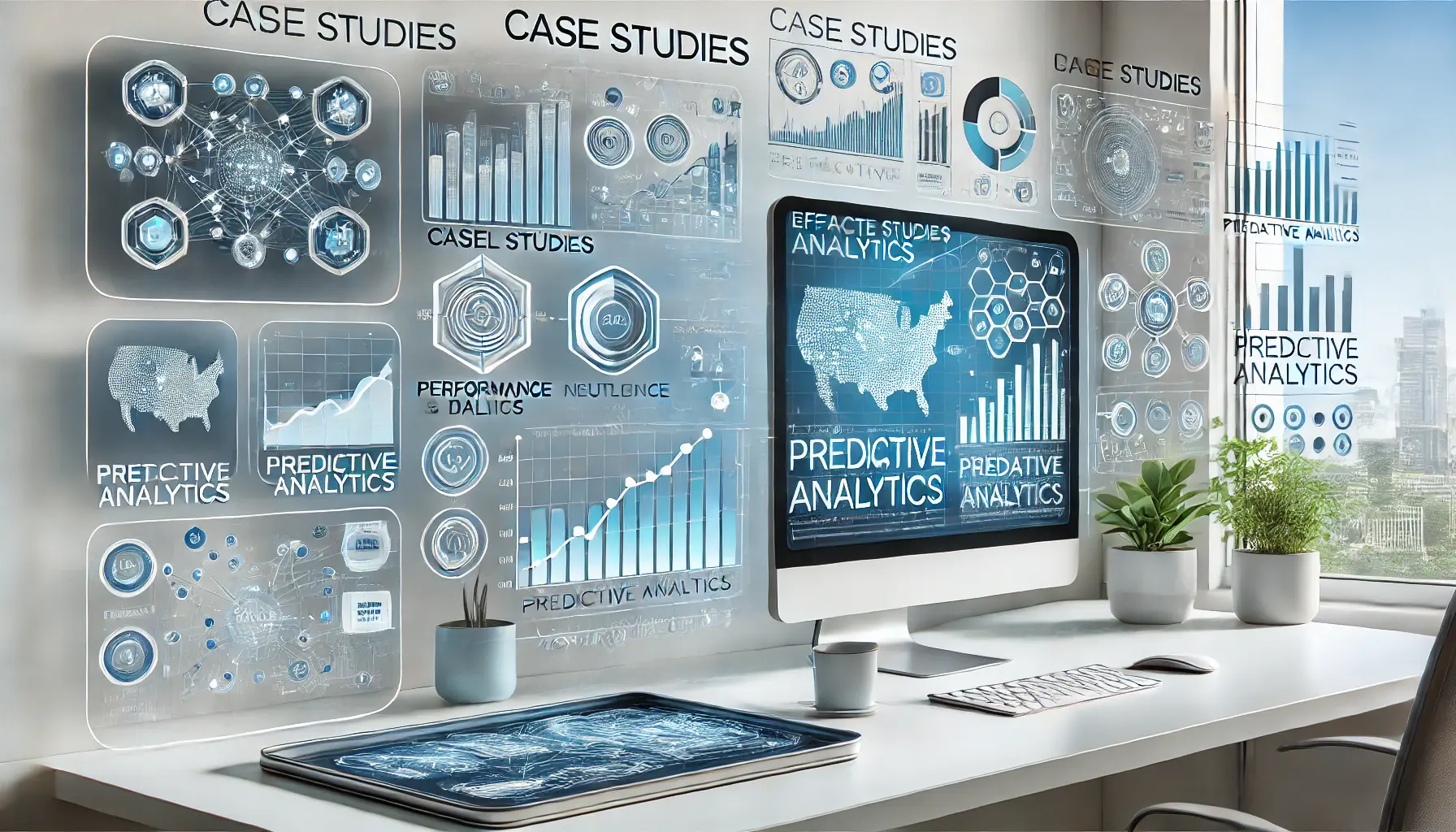
Visualizing Case Studies on the Effective Use of Predictive Analytics
Case Studies on the Effective Use of Predictive Analytics
Many organizations have successfully implemented predictive analytics in their operations:
- Retailers: Analyze purchase history to forecast product demand, optimize inventory, and enhance marketing efforts.
- Financial Services: Banks assess transaction patterns to detect potential fraud, improving security.
- Entertainment Platforms: Streaming services recommend content based on viewing habits, maximizing user engagement.
These case studies illustrate the versatility and impact of predictive analytics across different industries.
By embracing AI-driven predictive analytics, advertisers can transform their Google Display Ads campaigns, making data-driven decisions that anticipate user needs and drive superior outcomes.
Predictive analytics powered by AI enables proactive campaign adjustments by forecasting user behavior, helping advertisers optimize strategies.
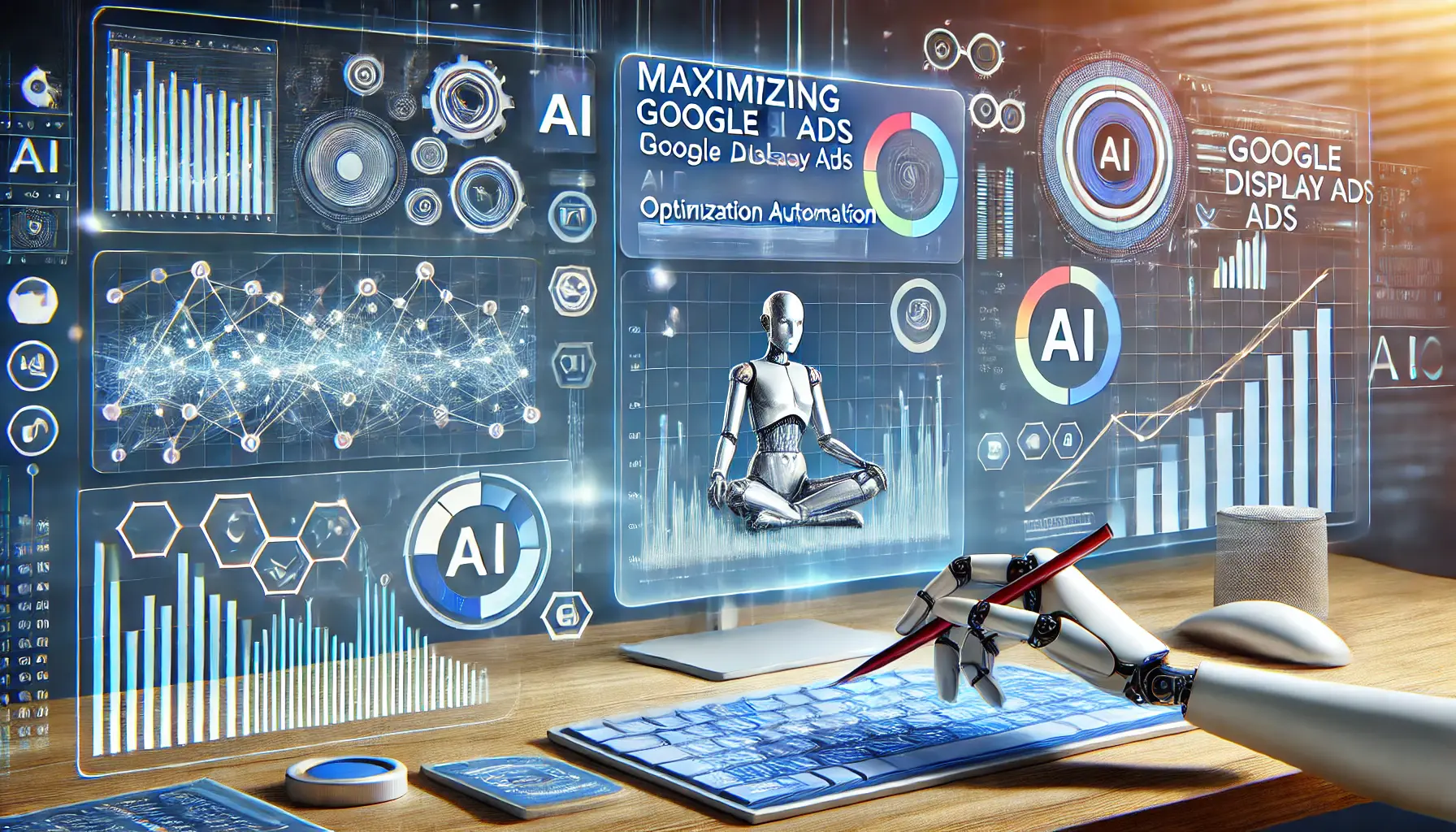
Visualizing AI-Driven Optimization of Google Display Ads
Maximizing Google Display Ads with AI Automation
AI-powered automation in Google Display Ads opens up new ways for advertisers to connect with audiences, execute campaigns, and optimize ROI.
From dynamic audience targeting to predictive analytics, every aspect of AI integration contributes to building a successful and efficient campaign.
Here’s a quick overview of these innovations and how they elevate digital advertising.
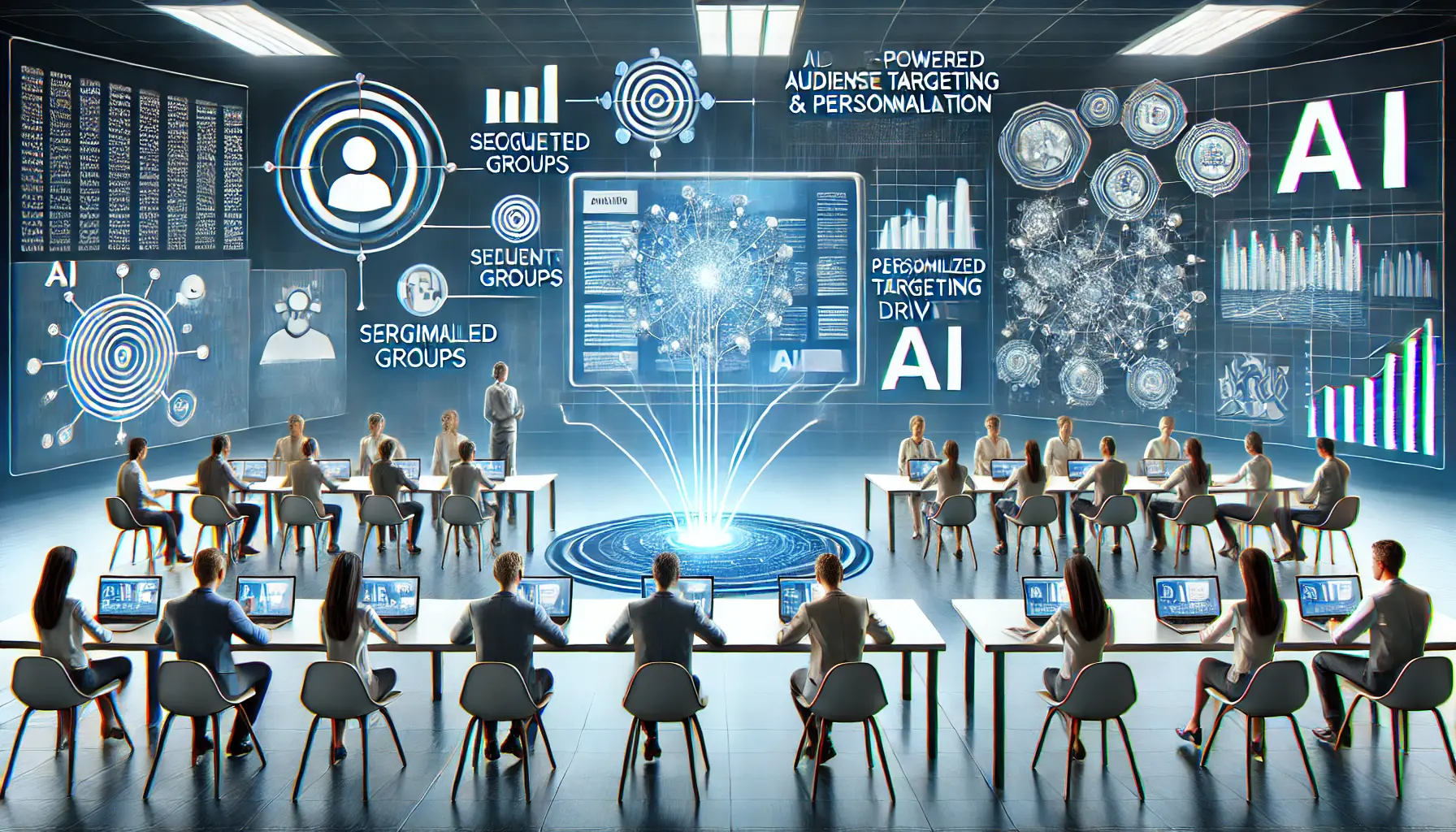
Visualizing AI-Powered Audience Targeting and Personalization in Digital Advertising
AI-Powered Audience Targeting and Personalization
One of the major advancements in Google Display Ads, AI-powered audience targeting allows advertisers to dynamically reach users most likely to engage with their ads.
Through the analysis of user behavior, interests, and demographics, AI enables advertisers to connect with highly niche and relevant audiences.
This level of personalization leads to deeper engagement and higher conversion rates.
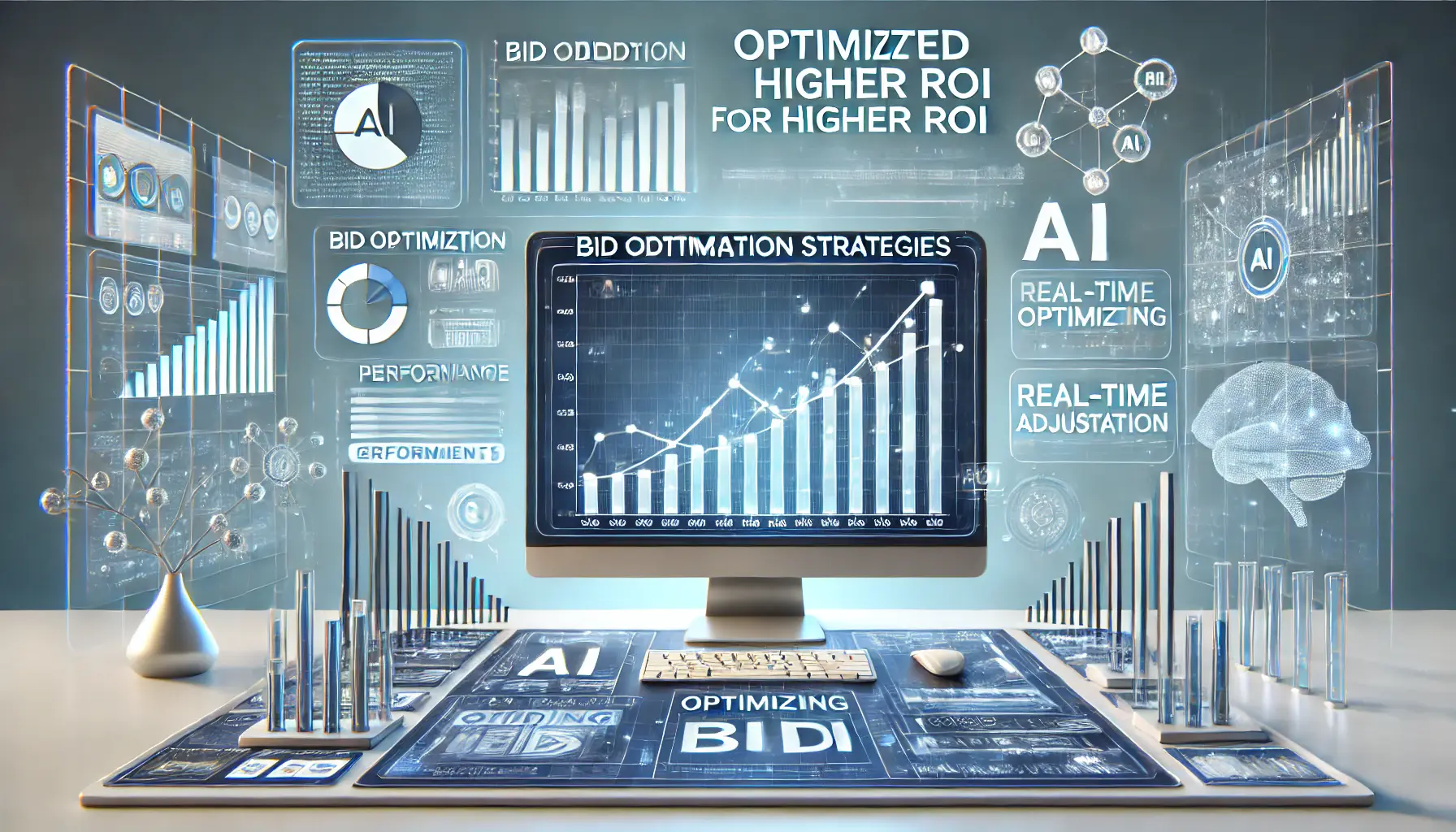
Visualizing Optimized Bidding Strategies for Higher ROI in Digital Advertising
Optimized Bidding Strategies for Higher ROI
With automated bidding strategies powered by AI, advertisers no longer need to set bids manually for each keyword or ad placement.
AI-driven bidding optimizes bids in real-time, considering factors like user intent, device type, and location.
This efficiency improves return on investment by aligning bids with campaign objectives more effectively.
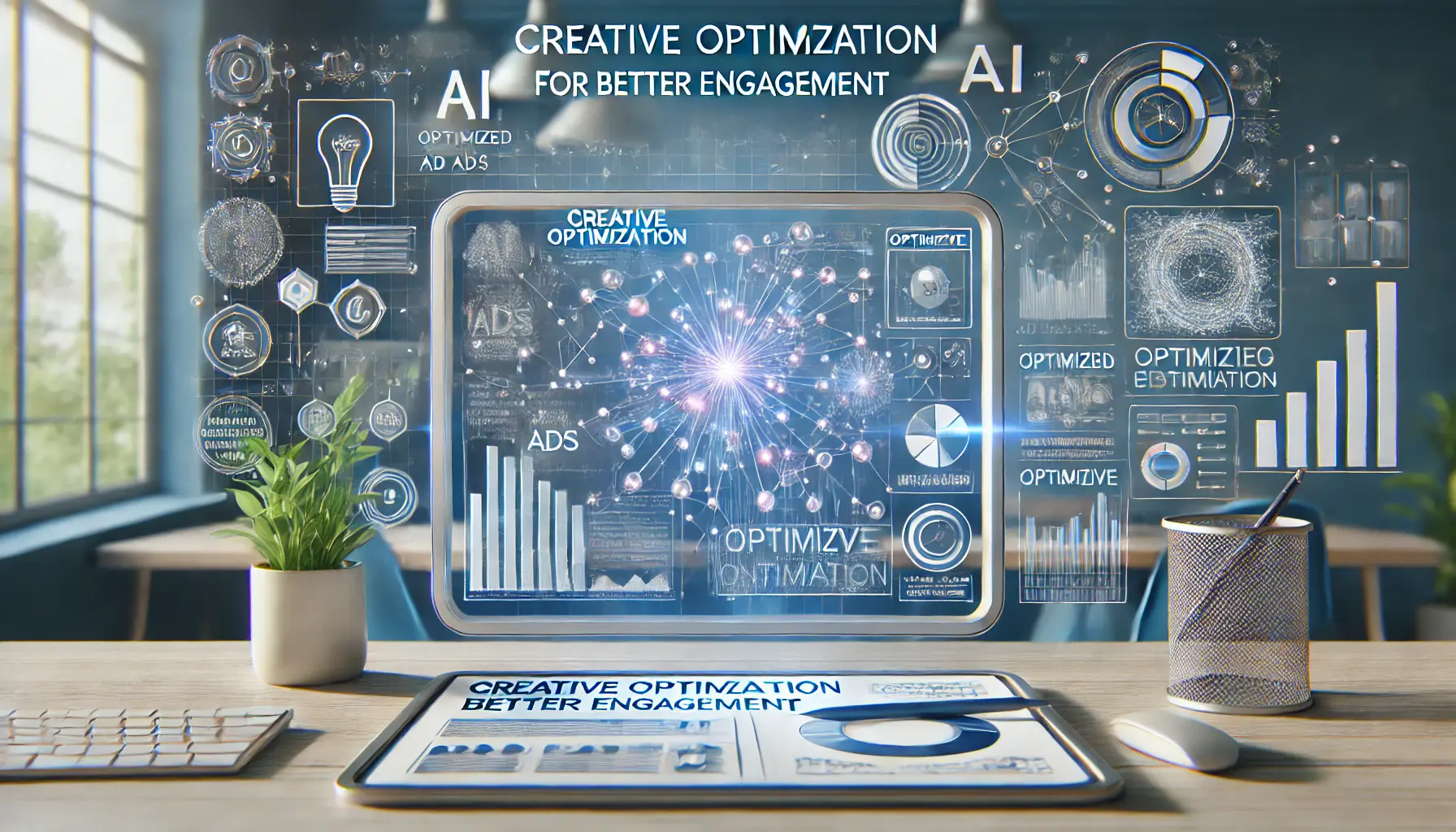
Visualizing Creative Optimization for Enhanced User Engagement in Digital Advertising
Creative Optimization for Better Engagement
AI brings significant advancements in creative optimization, helping advertisers develop ad creatives that resonate with different audience segments.
By dynamically adjusting creative elements based on user data, AI delivers a personalized ad experience that boosts engagement rates and overall effectiveness.
Continuous A/B and multivariate testing through AI ensures that the best-performing ads reach users.

Visualizing Predictive Analytics for Proactive Campaign Adjustments
Predictive Analytics for Proactive Campaign Adjustments
Predictive analytics is another vital aspect of AI automation in Google Display Ads, enabling advertisers to anticipate trends, user behaviors, and potential conversion rates.
By using data from past interactions, AI forecasts future performance, allowing advertisers to proactively adjust campaigns.
This helps with resource allocation, better targeting, and risk mitigation, leading to more effective advertising strategies.
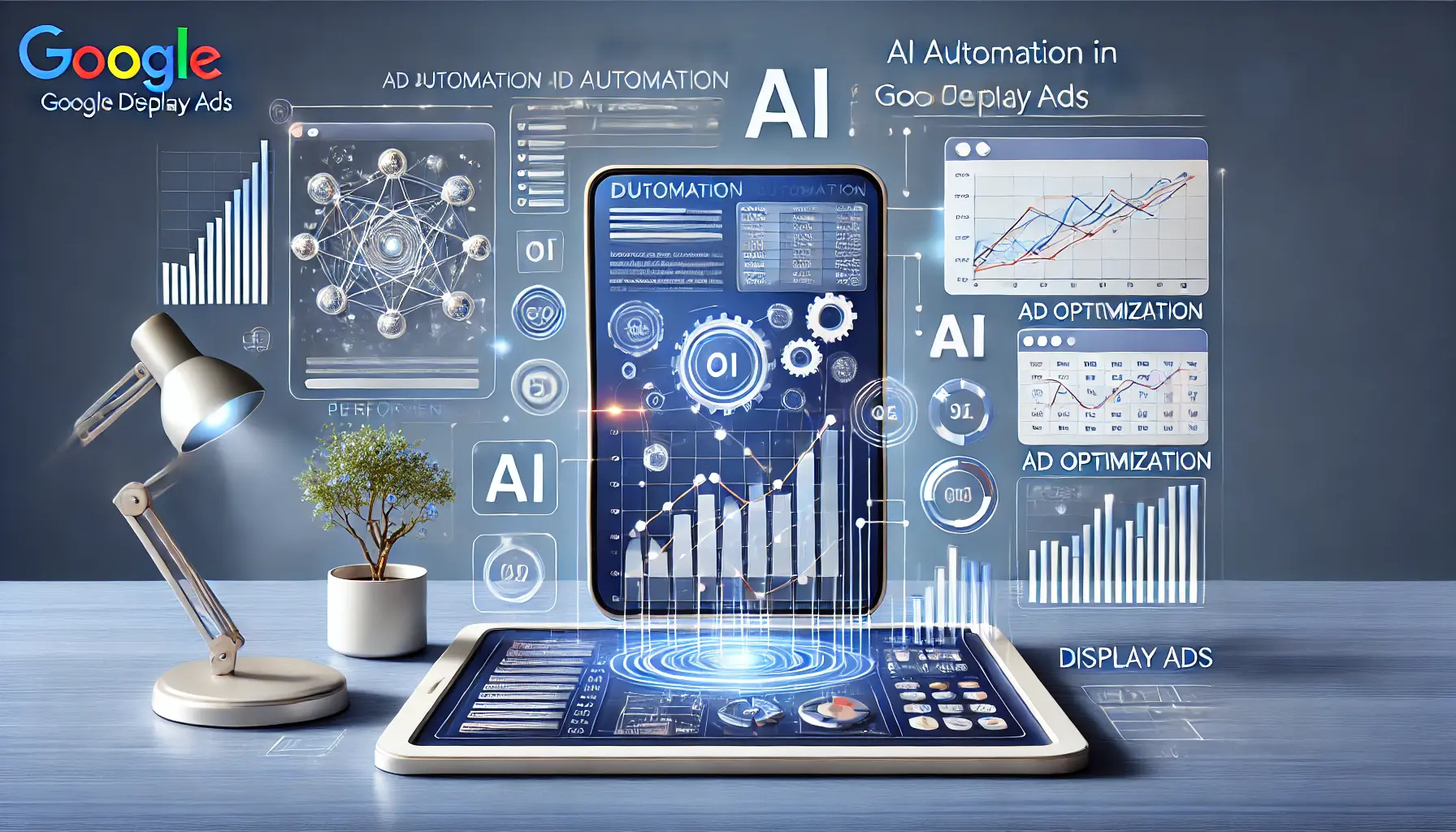
Visualizing the Benefits of AI Automation in Google Display Ads
Benefits of AI Automation in Google Display Ads
- Increased Efficiency: AI automates various aspects of ad management, reducing manual workload.
- Improved Precision: Machine learning algorithms make data-driven decisions to enhance targeting and creative relevance.
- High ROI: Optimized bids and targeted reach maximize return on investment.
- Future-Proof Strategies: Predictive analytics enable proactive adjustments to keep campaigns relevant in a constantly changing market.
Embracing AI automation within Google Display Ads equips advertisers with a sophisticated approach to building, optimizing, and measuring campaigns.
By leveraging these advancements, advertisers can deliver more engaging, timely, and cost-effective ads, achieving better results and maintaining a competitive edge in the digital advertising landscape.
Embracing AI automation in Google Display Ads maximizes campaign efficiency, engagement, and ROI, keeping advertisers competitive.
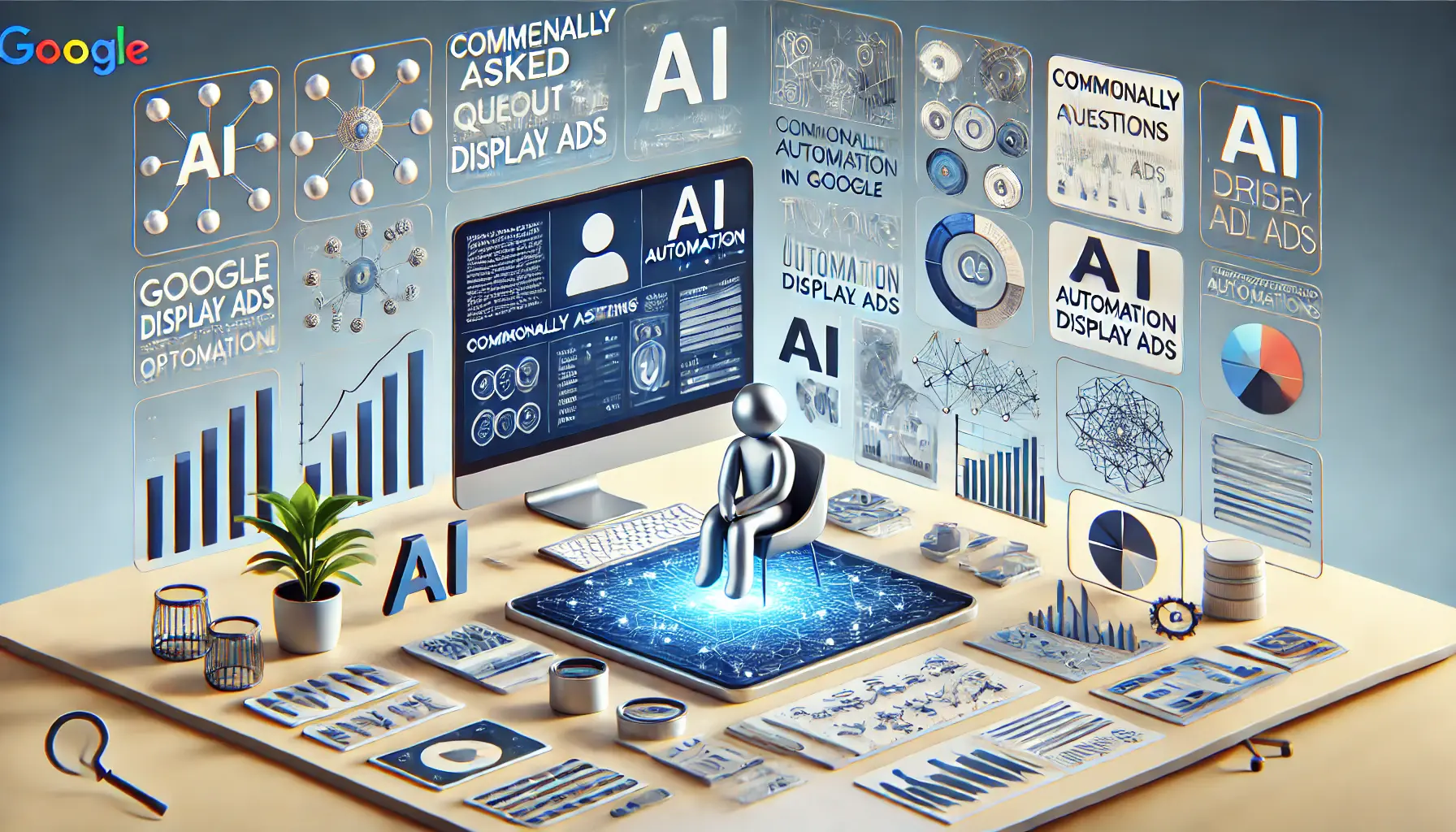
Visualizing Commonly Asked Questions About AI Automation in Google Display Ads
Your campaigns can be managed by an agency specialized in Google Ads, check out our service page.
Commonly Asked Questions About AI Automation in Google Display Ads
As AI automation becomes integral to Google Display Ads, advertisers often have questions about its implementation and benefits.
Below are some common queries along with brief responses to help clarify how AI automation can enhance ad campaigns.
AI automation in Google Display Ads refers to the use of artificial intelligence to optimize various aspects of ad campaigns, such as targeting, creative elements, and bidding, to improve performance and efficiency.
AI analyzes user behavior, interests, and demographics to dynamically target ads, showing them to the most relevant audiences that are more likely to engage and convert.
AI-driven bidding strategies automatically adjust bids in real-time based on factors like user intent, device type, and location, optimizing ad spend and maximizing return on investment.
AI helps in creating and testing various ad creatives, personalizing content based on user data, and continuously optimizing for improved engagement and effectiveness.
Predictive analytics use historical data and AI to forecast future trends and user behaviors, allowing advertisers to proactively adjust campaigns for better performance.
Yes, by optimizing targeting, bidding, and creative elements, AI automation improves campaign efficiency, which can lead to better results with potentially lower costs.
AI automation can benefit businesses of various sizes and industries by enhancing ad performance, though specific strategies may need to be tailored to individual business goals.
Utilize Google’s AI-powered tools and features, such as automated bidding strategies, responsive display adsAd format in Google Ads that adjusts automatically in size, appearance, and format to fit available ad spaces, and audience targeting options available within the Google Ads platform.
Challenges may include a learning curve in understanding AI tools, the need for accurate data for optimization, and balancing automation with human oversight.
